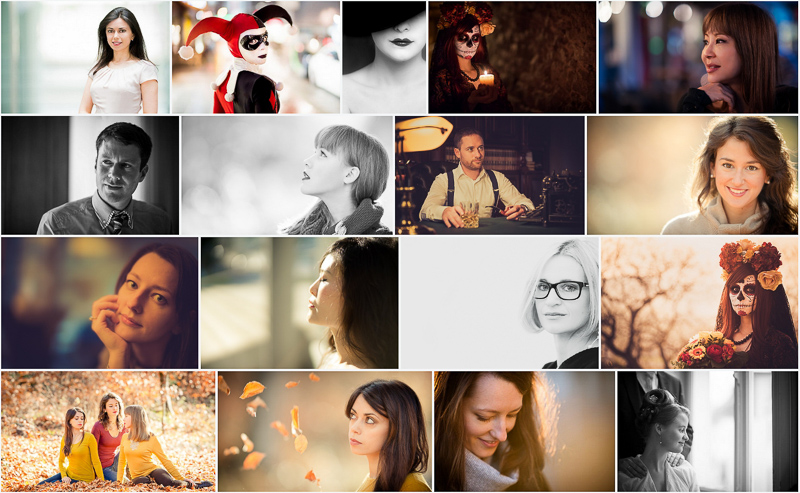
We summarize our experience with all the native E-mount and a few legacy lenses in the 85-200mm bracket for the Sony A7/A9/A1 series to give you a compact and independent resource for choosing the best portrait lens for your needs.
We also have a general guide to FE-lenses, 9-18mm ultra wide angle lenses, guide to 20-28mm wide angle lenses, 35mm lenses, 50mm lenses and macro lenses.
Unlike most other review sites we have no association with any lens manufacturer apart from occasionally loaning a lens for a review. No fancy trips and meals.
Before any short introduction we tell you how long we have used a lens and if we have borrowed it from a manufacturer. But in most cases we have bought the lenses new from retail stores or on the used market.
If we have left any question unanswered please leave a comment or contact us on social media and we will do our best to answer it.
If you purchase the lens through one of the affiliate-links in this article we get a small compensation with no additional cost to you.
Last update: March 2025, several lenses added, cleaned up
Thanks to Simeon Kolev for helping out with nice sample images!
Contents
- Native Prime Lenses
- Sony FE 85mm 1.4 GM II
- Sony FE 85mm 1.4 GM
- Sigma 85mm 1.4 Art DG DN
- Sigma 85mm 1.4 Art (former DSLR design)
- Samyang 85mm 1.4 AF MK I and MK II
- Sirui 85mm 1.4 Aurora
- Sony FE 85mm 1.8
- Zeiss Batis 85mm 1.8
- Viltrox AF 85mm 1.8 FE II
- Zeiss Loxia 85mm 2.4
- Sony FE 90mm 2.8 Macro OSS
- Sony FE 100mm 2.8 STF OSS
- Sigma 105mm 1.4 Art (former DSLR design)
- Voigtlander APO 110mm 2.5 Macro
- Sony FE 135mm 1.8 GM
- Samyang 135mm 1.8 AF
- Sigma 135mm 1.8 Art (former DSLR design)
- Viltrox AF 135mm 1.8 FE LAB
- Zeiss Batis 135mm 2.8
- Native Zooms
- Adapted AF lenses
- Adapted manual focus lenses
- Samyang 85mm f1.2 XP
- Canon FD 85mm 1.2 Aspherical
- Samyang 85mm f1.4 MF MKI and MKII
- Jupiter-9 85mm 2.0
- TTArtisan 90mm 1.25
- Leica Summicron 90mm 2.0 pre Asph
- Olympus OM 100mm 2.0
- Minolta MD 100mm 2.5
- Zhong Yi Mitakon 135mm 1.4 Speedmaster
- Carl Zeiss APO Sonnar 135mm 2.0
- Samyang 135mm 2.0 MF
- Olympus OM Zuiko Auto-T 180mm 2.0
- Carl Zeiss Jena Visionar 168/183mm 1.9
- Nikon 200mm 2.0 IF-ED Ai
- Closing Remarks
- Other Articles
Native Prime Lenses
Sony FE 85mm 1.4 GM II
Recommended
- excellent sharpness from f/1.4 under any condition
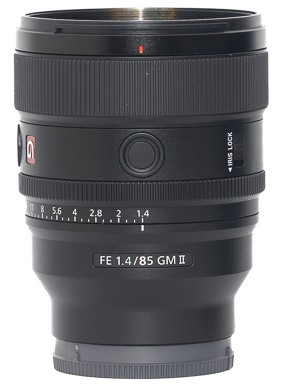
- bokeh (mostly)
- very good Coma correction
- very good CA correction
- low distortion
- build quality/handling
- very fast AF (much better than predecessor)
- smaller and lighter than the MK I version
Sony did here, what they always do with their MK II GM lenses: they increased resolution and contrast while making the lens lighter and smaller and adding more capable AF. For me the AF is the main selling point, as I personally prefer the MK I’s bokeh and don’t need this high level of resolution and contrast in a portrait lens.
640g | $1798 | Review | aperture series | sample images
buy from amazon.com | amazon.de | ebay.com | ebay.de | B&H (affiliate links)

Sony FE 85mm 1.4 GM
- Superior bokeh rendering thanks to optimized optical design
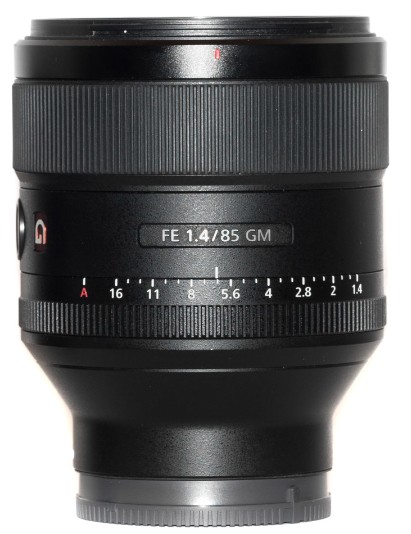 (less cat’s eyes compared to competition) and XA elements (no onion ring structures despite usage of aspherical elements)
(less cat’s eyes compared to competition) and XA elements (no onion ring structures despite usage of aspherical elements) - Slightly soft and gentle rendering at f/1.4, sharpens up considerably on stopping down to only f/1.6
- Amazing contrast and resolution across frame stopped down
- GM build quality with aperture ring, AF/MF switch and additional button
- A bit big, heavy, quite expensive and not the fastest AF
This is not the highest resolving lens wide open on this list, but maybe the one with the most beautiful bokeh rendering.
825g | $1298 | Review | aperture series | sample images
buy from amazon.com | amazon.de | B&H | ebay.com | ebay.de (affiliate links)
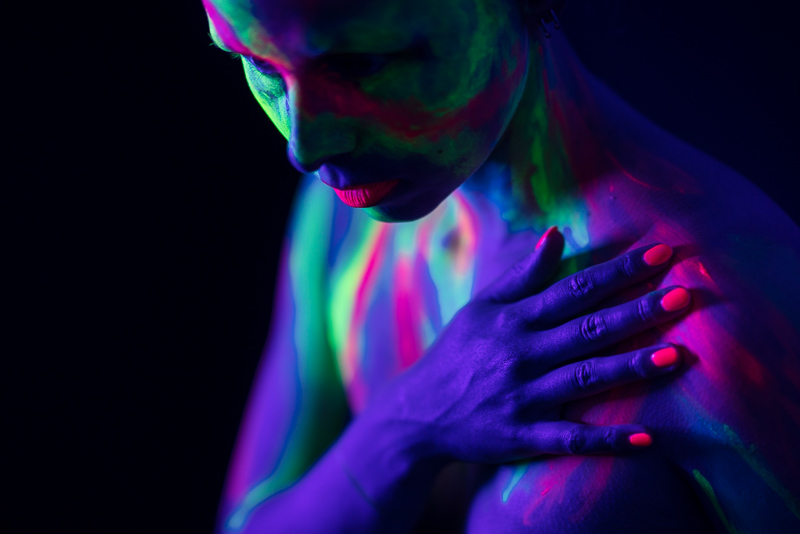
Sigma 85mm 1.4 Art DG DN
Recommended
- Very high resolution and contrast already at maximum aperture
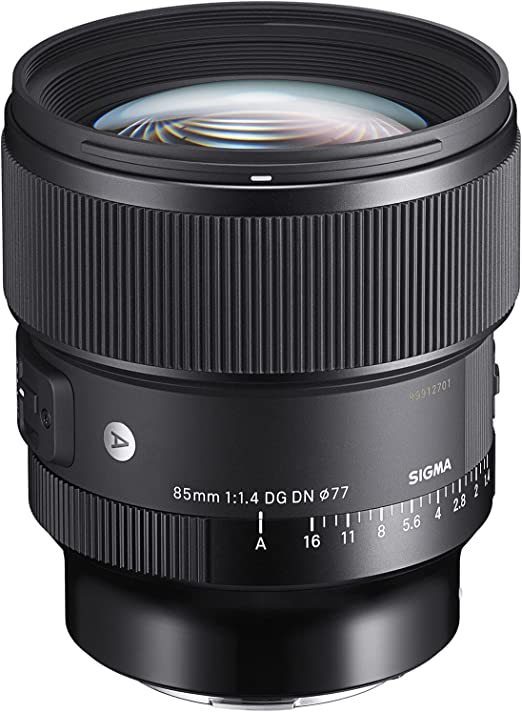 (higher than Sony FE 85mm 1.4 GM and Sigma 85mm 1.4 Art DSLR version)
(higher than Sony FE 85mm 1.4 GM and Sigma 85mm 1.4 Art DSLR version) - Great correction of color aberrations
- Bokeh im some scenarios not as smooth as Sony FE 85mm 1.4 GM but comes very close
- Comparably low weight and reasonable size
This might be Sigma’s best balanced f/1.4 Art prime so far. With a very complex design they managed to create a lens which is sharper yet almost 200g lighter than the Sony 85mm 1.4 GM. The bokeh connoisseur might still prefer one of the other options.
625g | $1089 | Review
buy from Amazon.de | B&H | ebay.com (affiliate links)
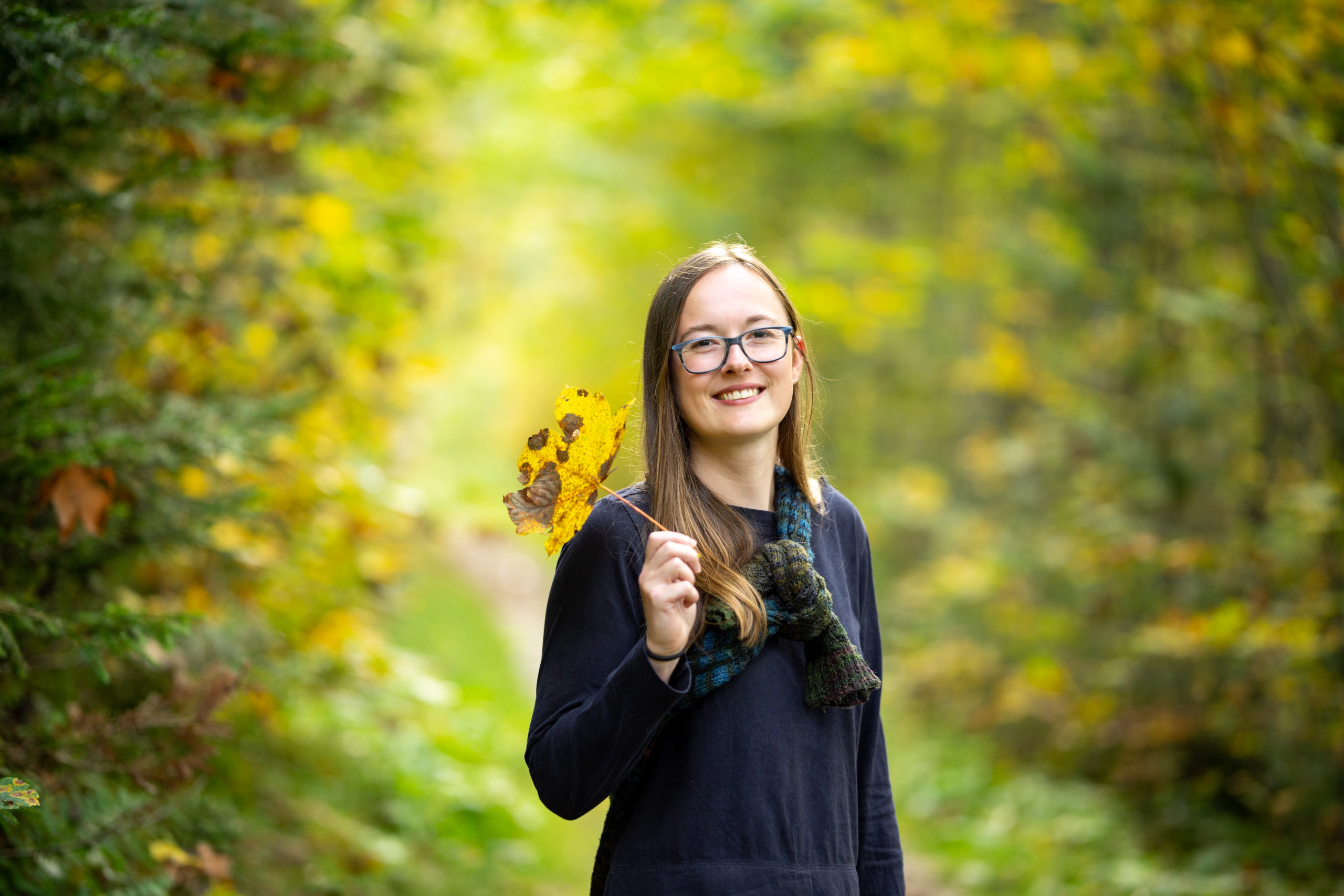
Sigma 85mm 1.4 Art (former DSLR design)
- Very high resolution and contrast already at maximum aperture
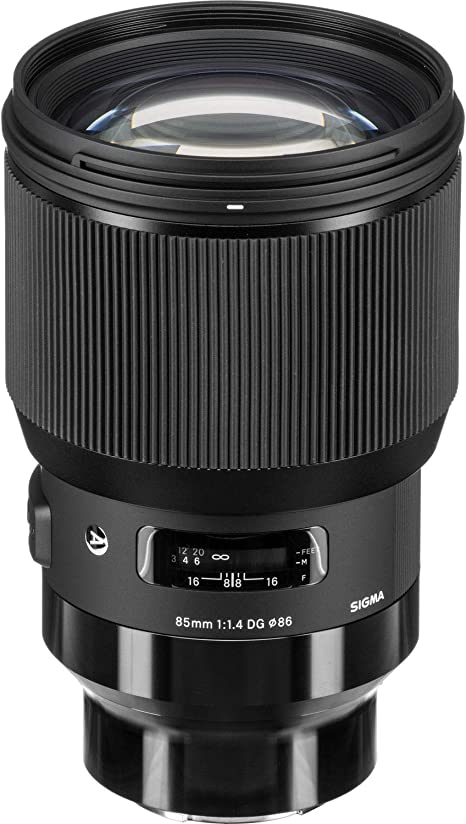 (higher than Sony FE 85mm 1.4 GM)
(higher than Sony FE 85mm 1.4 GM) - Bokeh not as smooth as Sony FE 85mm 1.4 GM and Sigma 105mm 1.4 Art
- Huge and heavy
Now that the mirrorless version (see entry above) has been released there is little reason to get this lens.
1130g | $1099 | Lenstip Review
buy from amazon.com | amazon.de | B&H | ebay.com | ebay.de (affiliate links)
Samyang 85mm 1.4 AF MK I and MK II
- high resolution and contrast from f/1.4 everywhere in the frame
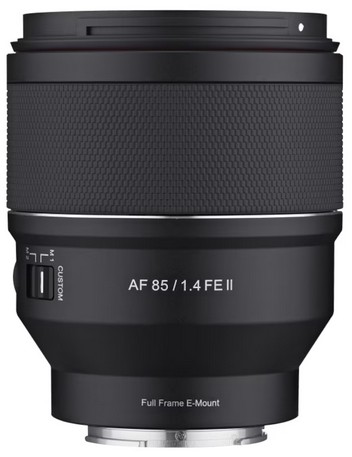
- smooth Bokeh but stronger cat’s eye effect than Sony FE 85mm 1.4 GM
- good CA correction
- low distortion
- customizable button and switch (MK II only)
- MK II is the lightest 85mm 1.4 AF lens for E-mount
Nicer bokeh than the FE 1.8/85 and sharper than the GM 1.4/85 in the center – this is a really attractive portrait lens. This lens has been updated to an MK II version with unchanged optics but improved mechanical design (lower weight) and electronics.
MKI: 568g | $515 | Lenstip Review
MKII: 509g | $799
buy from amazon.com | amazon.de | ebay.com | ebay.de | B&H (affiliate links)
Sirui 85mm 1.4 Aurora
Budget Recommendation
- very nice bokeh
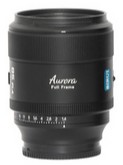
- good sharpness and contrast from f/1.4 at portrait distances and infinity
- very good CA correction
- handling with similar button layout as Sony’s GM lenses
- AF performance and flare resistance could be better
- one of the smallest and lightest 85mm 1.4 AF lenses
If you don’t need class leading autofocus and you are not shooting in backlight all the time, I don’t see a reason why you wouldn’t be happy with this lens though. Considering you can get this for 500 bucks new, it is quite the bargain actually.
539g | $499 | Review coming soon
buy from amazon.com | amazon.de | B&H | ebay.com | ebay.de (affiliate links)
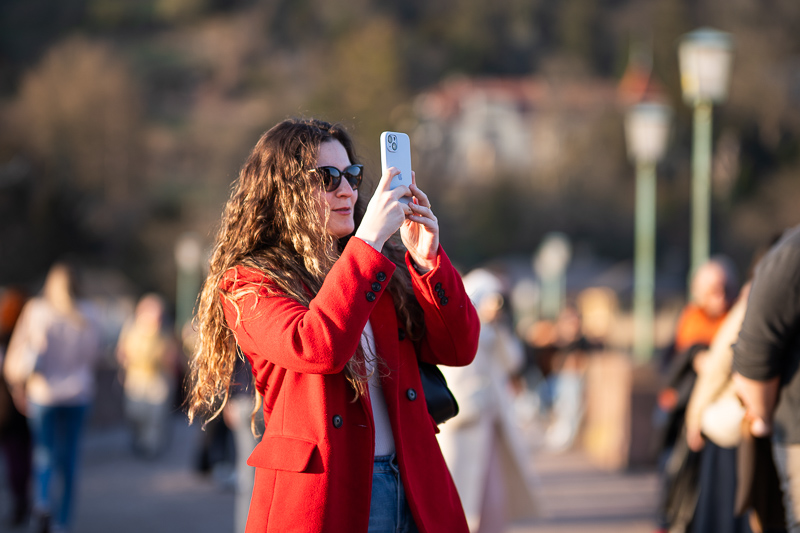
Sony FE 85mm 1.8
- good sharpness from f/1.8
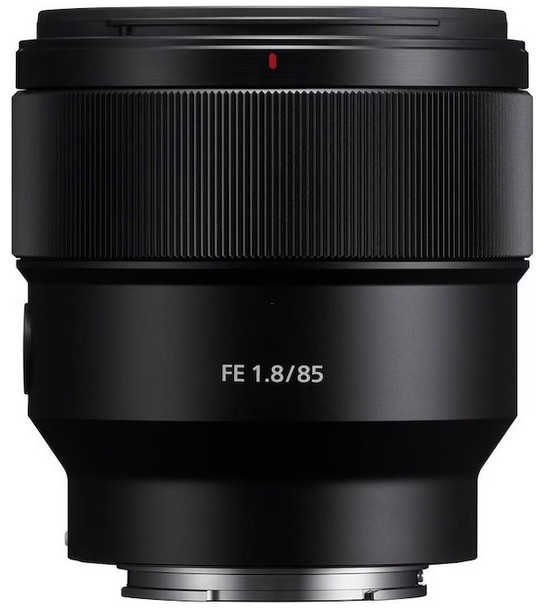
- Bokeh is good but not excellent
- Shows some purple fringing wide open in harsh light
- very fast AF
- Almost no distortion, ok vignetting & loCA correction
- Small size and weight
- AF/MF-switch, lens button and linear MF come in handy.
Good image quality combined with very fast AF and small size/weight made it an interesting option for Sony portrait photographers when it was released. In the meantime the competitors caught up though, so be sure to check out the Sirui 85mm 1.4 Aurora and the Viltrox 85mm 1.8 AF FE II.
371g | $498 | Review | aperture series | sample images | Shootout Sony 1.8/85 vs. 1.4/85 GM
buy from ebay.de | ebay.com | amazon.com | amazon.de (affiliate links)
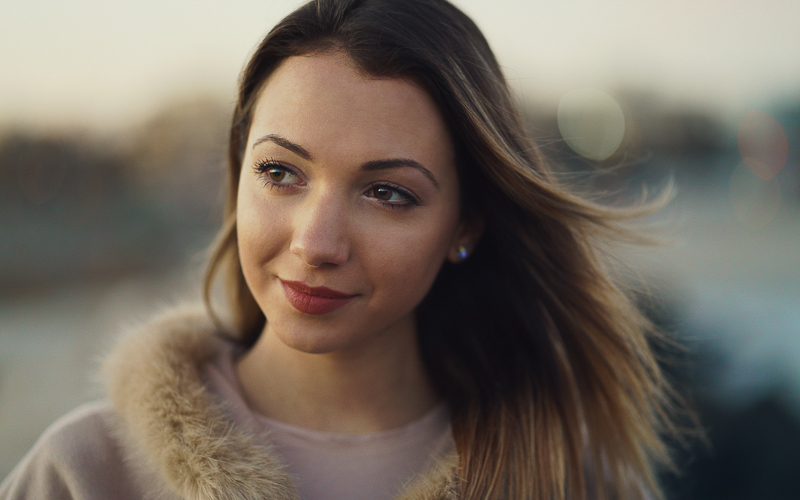
Zeiss Batis 85mm 1.8
- very good resolution and contrast
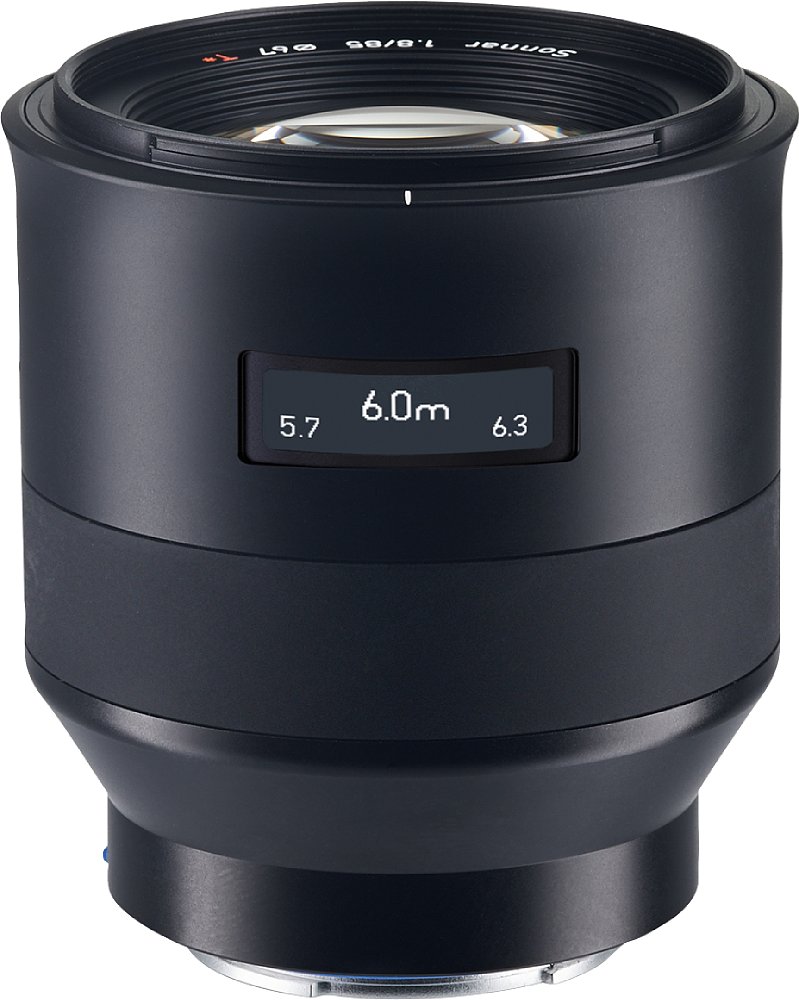
- low CA
- very good flare resistance
- average distortion and vignetting
- a little bit larger than some other 85mm 1.8 lenses
Next to the latest 85mm 1.4 lenses (e.g. Sigma 85mm 1.4 DG DN Art, Sirui 85mm 1.4 Aurora, Samyang 85mm 1.4 AF II) this surely looks outdated and overpriced.
452g | $1249 | Review
buy from amazon.com | buy from eBay | B&H (affiliate links)
Viltrox AF 85mm 1.8 FE II
Budget Recommendation
- very nice bokeh for an 85mm 1.8 lens, better than Sony FE
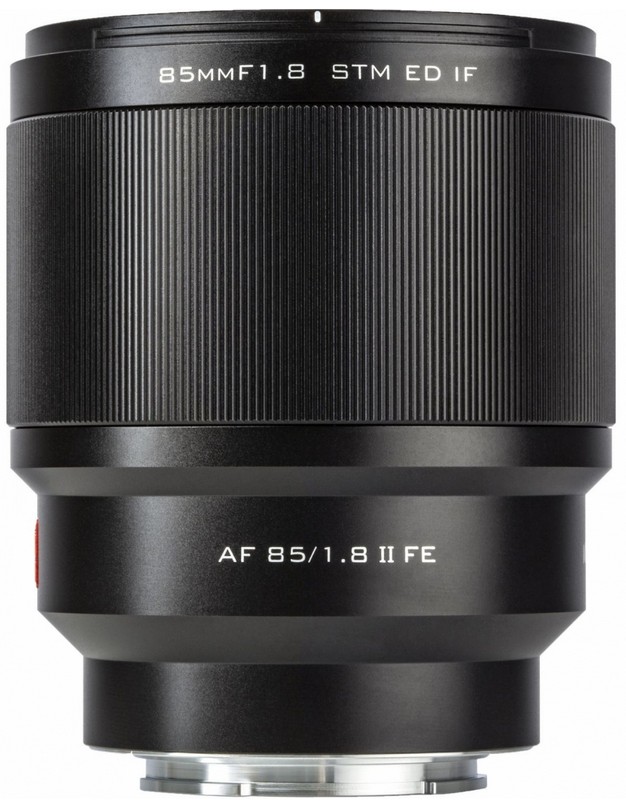 85mm 1.8
85mm 1.8 - good sharpness
- comparably strong but easy to correct pincushion distortion
- lacks controls compared to some of the other lenses
- MKI also available relabeled as Tokina Firin 85mm 1.8
We reviewed the first version on Sony E and the second version on Nikon Z. This is a very strong performer as it combines good sharpness with very smooth and appealing bokeh. A good option for who is on a budget and still wants a portrait lens with great bokeh. The Sirui 85mm 1.4 Aurora is only $100 more, the same weight and offers the full set of controls, so be sure to check out that one as well.
540g | 399$ | Review (MKI) | Review (MKII) | Sample images
buy from B&H | ebay.com | ebay.de (affiliate links)
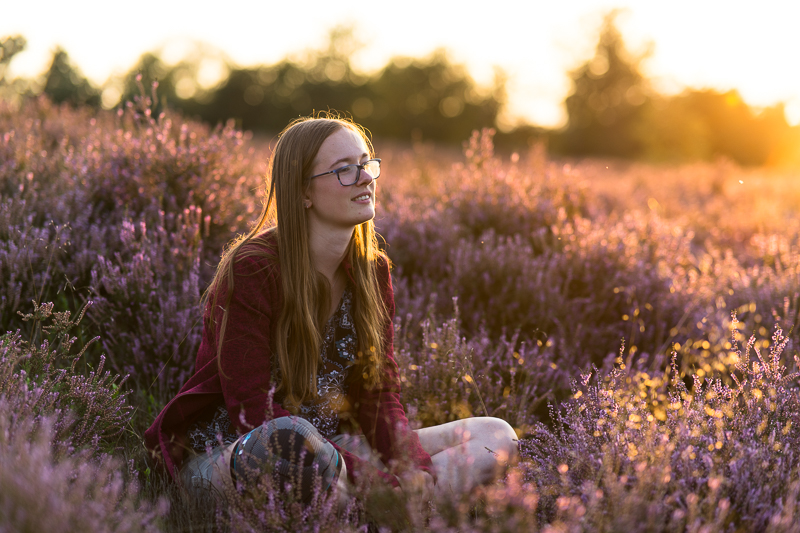
Zeiss Loxia 85mm 2.4
- gentle and unobtrusive bokeh rendering
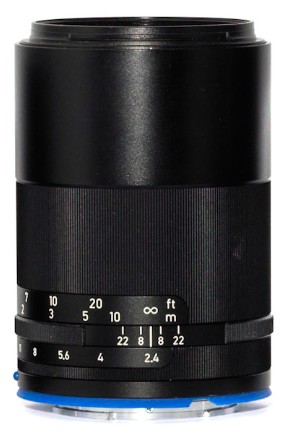
- due to small lens diameter cat’s eyes are quite pronounced
- Amazing contrast and resolution across frame at all apertures
- Almost no distortion, good flare resistance, very nice sunstars
- A bit on the heavy side and quite expensive, otherwise nice handling but consider adding a PocketPano Loxia Lens-Grip
Too heavy and expensive compared to the modern 85mm 1.4 lenses.
594g | $1449 | Review | aperture series | sample images
buy from amazon.com | amazon.de | B&H | ebay.com | ebay.de (affiliate links)
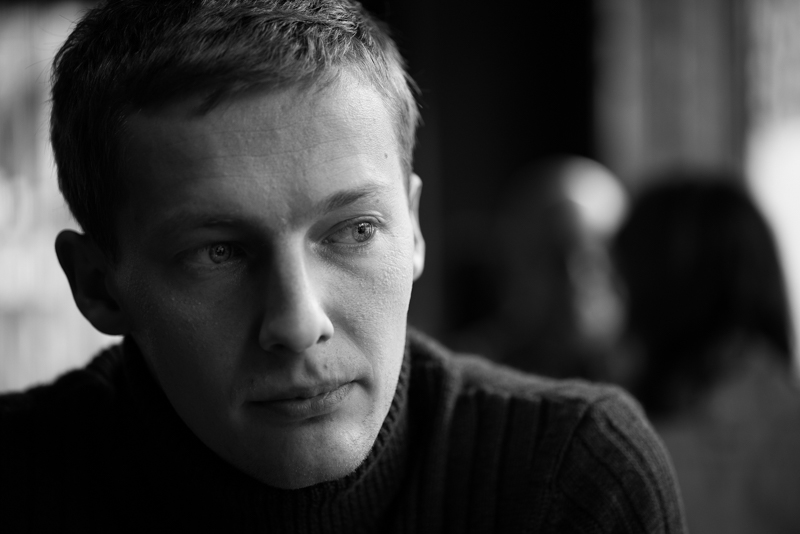
Sony FE 90mm 2.8 Macro OSS
- This is a very sharp lens. From wide open you will get excellent
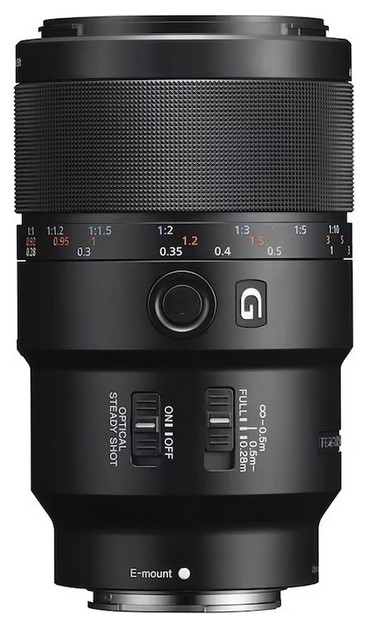 results wherever you place you subject.
results wherever you place you subject. - Bokeh is very smooth without onion rings. Some won‘t like the stronger cat-eyes. You are of course limited in how much you can blur the background by the moderate speed.
- One of the bigger and more expensive lenses on this list. AF isn’t the fastest.
This is a good choice if you want to cover a wide range of applications. It works well enough for portraits but if that is your main focus then some of the other lenses are probably a better choice.
602g | $1098 | Review
buy from Amazon.com | Amazon.de | Ebay (affiliate Links)
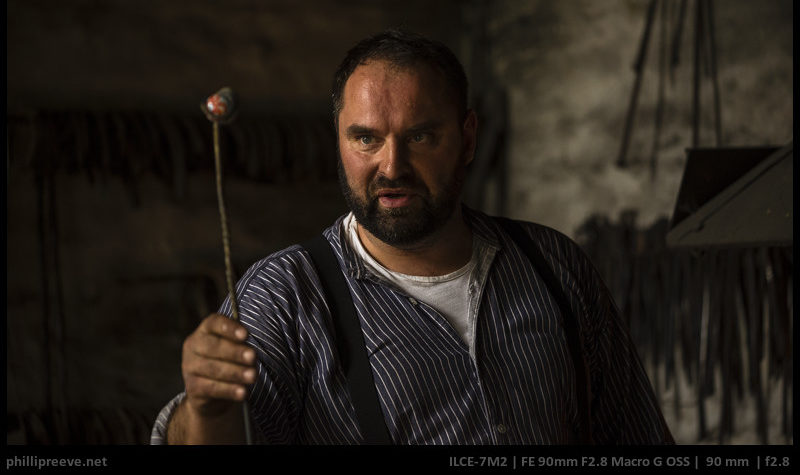
Sony FE 100mm 2.8 STF OSS
- This lens uses an apodization filter to progressively darken the bokeh balls like a neutral density filter farther away from center. If the effect is used efficiently, the bokeh won’t have any hard edges and will look like gaussian blur that was applied afterwards.
- Although this lens has a bright aperture of f/2.8, it has a very bad transmission (T5.6) and will behave like a f/5.6 lens in exposure. Therefore, this lens is more limited to good weather applications or tripod work.
- This lens is very sharp, most optical errors are well corrected and it offers a maximum magnification of 1:4.
This is a special purpose lens with unique bokeh. Check out the samples in our review to decide if the look is for you.
700g | $1498 | Review
buy from Amazon.com | Ebay.com | B&H (affiliate links)
Sigma 105mm 1.4 Art (former DSLR design)
- Similar design criteria to Sony FE 85mm 1.4 GM with
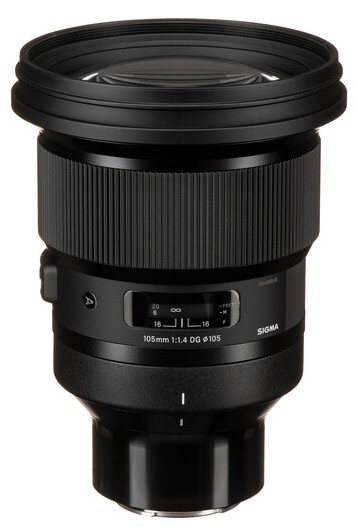 emphasize on smooth out of focus rendering and therefore called “Bokeh Master” by Sigma
emphasize on smooth out of focus rendering and therefore called “Bokeh Master” by Sigma - low optical vignetting
- Extremely high resolution and contrast already at maximum aperture
- Huge, heavy and expensive lens, make sure that 20mm more are worth it for you to choose it over one of the 85mm 1.4 lenses
If weight is no concern and you really want 105mm and not 85 have a closer look at this one. One of the few lenses combining extremely high contrast and resolution with very appealing bokeh rendering.
1640g | $1100 | Review
buy from amazon.com | amazon.de | B&H | ebay.com | ebay.de (affiliate links)

Voigtlander APO 110mm 2.5 Macro
- Since it is a manual focus macro lens, focus throw is a bit steep at portrait distances but still manageable.
- Very smooth bokeh with average cat’s eyes. The aperture shape is decagonal stopped down.
- One of the sharpest lenses in this guide. Not that it is important for a portrait lens.
- Excellent CA correction.
- Big, heavy and expensive.
Not a lens you buy first and foremost as a portrait lens but it can still be used for that purpose.
771g | $899 | Review
buy from B&H | amazon.com | amazon.de | ebay.com (affiliate links)
Sony FE 135mm 1.8 GM
Recommended
- Very high resolustion and contrast
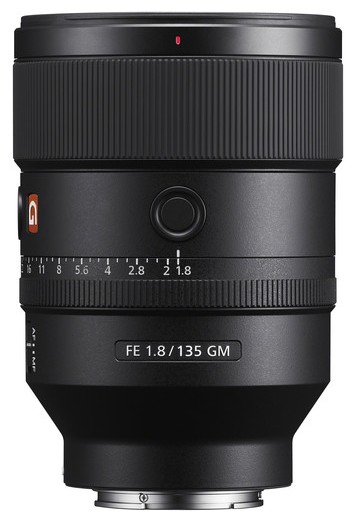
- Samples show smooth bokeh, low CA and moderate cat’s-eyes
- Better AF than the E-Mount Sigma 1.8/135, especially in low light
- Flare resistance could be better
The 1.8/135 GM is an ultra high resolving lens with very fast autofocus. Bokeh is very good but not as butterly smooth as Sony FE 85mm 1.4 GM or Sigma 105mm 1.4 Art.
950g | $2098 | Review
buy from amazon.com | amazon.de | ebay.com | ebay.de | B&H (affiliate links)
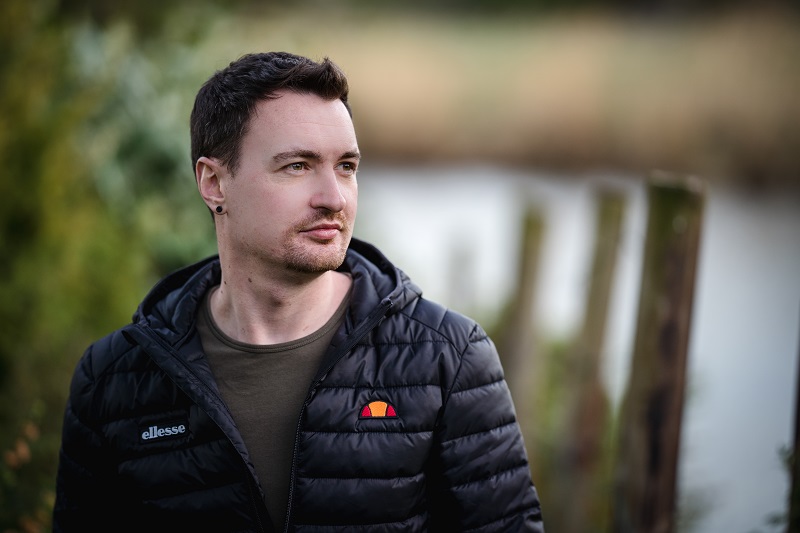
Samyang 135mm 1.8 AF
Recommended
- very high contrast and resolution (in the field same as Sony FE
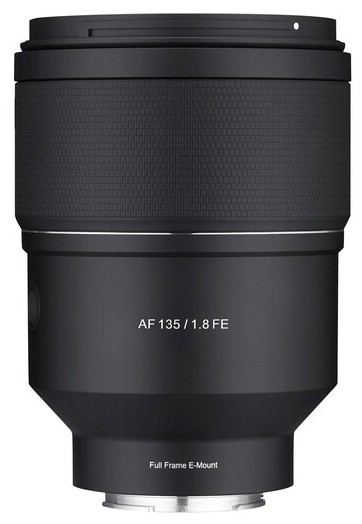 135mm 1.8 GM)
135mm 1.8 GM) - very nice and smooth bokeh
- very low amount of longitudinal CA
- lower distortion and optical vignetting than the Sony FE 135mm 1.8 GM
- Flare resistance could be better
- lighter than the Sony FE 135mm 1.8 GM but similarly sized
A great option for those that cannot or do not want to afford the aforementioned Sony lens or simply don’t need its impeccable AF performance for sports applications
772g | $799 | Review
buy from B&H | amazon.com | amazon.de | ebay.com | ebay.de (affiliate links)

Sigma 135mm 1.8 Art (former DSLR design)
- Class leading resolution and high contrast already at maximum
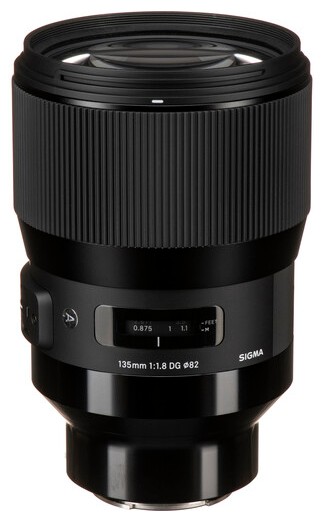 aperture
aperture - Bokeh not as smooth as Sony FE 85mm 1.4 GM and Sigma 105mm 1.4 Art but still on a high level
- Huge and heavy.
This is a slightly smaller option compared to the Sigma 105mm 1.4 and a cheaper option compared to the GM 135mm 1.8, but the Samyang 135mm 1.8 is a way more appealing option thanks to being designed for mirrorless cameras and not a DSLR lens with built-in adapter
1130g | $1085 | Lenstip Review
buy from amazon.com | amazon.de | B&H | ebay.com | ebay.de (affiliate links)
Viltrox AF 135mm 1.8 FE LAB
- nice bokeh in most situations with low optical vignetting (cat’s
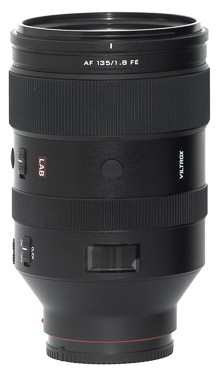 eyes)
eyes) - good sharpness at all distances
- very good CA correction
- good coma correction
- good build quality
- too large and heavy compared to the competitors
For a little more money you can get a used copy of the Sony FE 135mm 1.8 GM, which performs better in several categories and offers outstanding AF. Then there is also the Samyang AF 135mm 1.8 FE. Its performance is pretty much on par with this Viltrox lens, yet it is way lighter. Therefore, despite being a good lens by itself, I find this Viltrox a bit hard to recommend.
1234g | $899 | Review
buy from manufacturer’s shop | Pergear | Amazon.com | Amazon.de | ebay.com | ebay.de | B&H (affiliate links)

Zeiss Batis 135mm 2.8
- Extremely sharp and contrasty
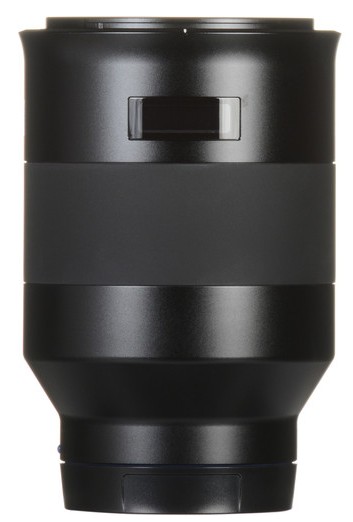 across the frame and low aberrations from f/2.8.
across the frame and low aberrations from f/2.8. - Bokeh is good but not as good as larger faster 135s when stopped down
- Silent, fast and reliable AF, OSS, weather sealed,
- Flare resistance is good
- Quite large compared to classic simpler f2.8 lenses, but not too heavy
- No lens accessories like AF/MF switch, button or aperture ring, non linear MF
A premium lens with very good image quality in a relatively compact body. The very high price tag, the lack of switches/buttons and the moderate speed may take away some of its appeal.
614g | $1299 | Review
buy from amazon.com | amazon.de | ebay.com | B&H (affiliate links)
Native Zooms
Tamron 70-180mm 2.8 Di III VC VXD G2
- very good sharpness
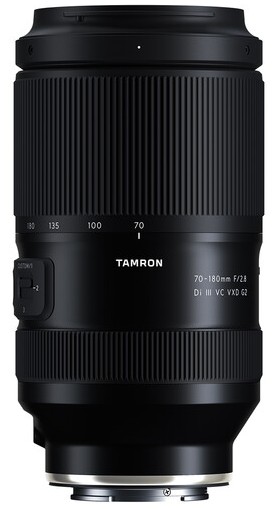
- nice bokeh in most situations
- fast autofocus
- versatilve minimum focus distance (now also with AF)
- very good correction of longitudinal CA
- comparably compact, lightweight and decently priced
- compared to the predecessor controls and an optical stabilizer have been added
Nice bokeh, good sharpness, very good CA correction, a versatile minimum focus distance in a compact and still affordable package. Handling has been greatly improved compared to its predecessor. A worthy update that made an already great lens even better. If you buy new be sure to get this improved version.
853g | $1299 | Review
buy from amazon.com | amazon.de | B&H | ebay.com | ebay.de (affiliate links)
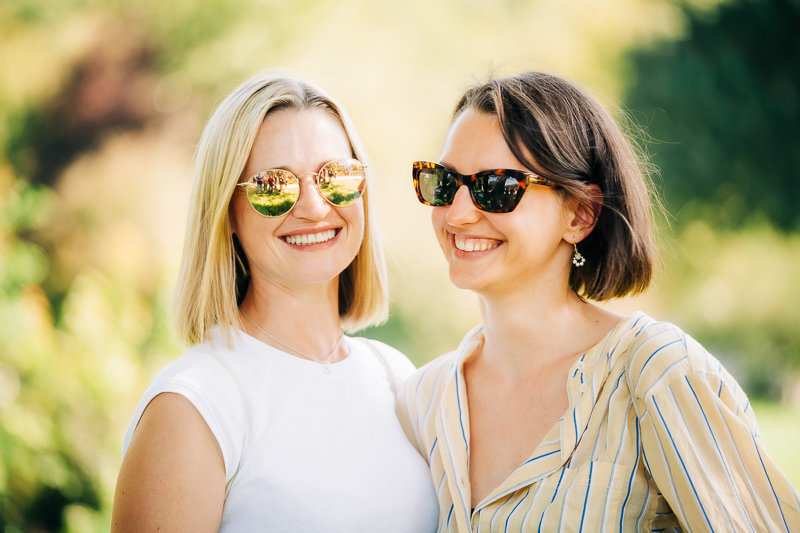
Tamron 70-180mm 2.8 Di III VXD
- really good image quality at portrait distances and infinity
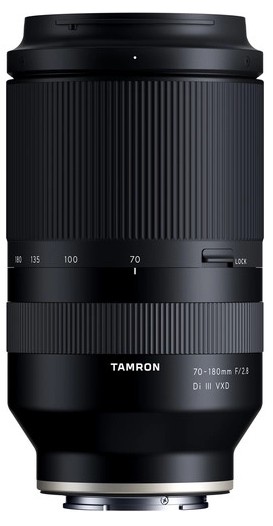
- focuses very close (but only in manual focus mode)
- mostly smooth bokeh
- comparably compact, lightweight and decently priced
- lacks additional buttons (AF/MF switch, focus hold, focus limiter), OSS and features non linear manual focus
The updated MK II version is clearly the better lens, but this MK I can often be found at very attractive prices on the used market. If you are looking for a zoom on a budget and you don’t mind the lack of controls this is a great option.
805g | $700 (used) | Review
buy from amazon.com | amazon.de | B&H | ebay.com | ebay.de (affiliate links)
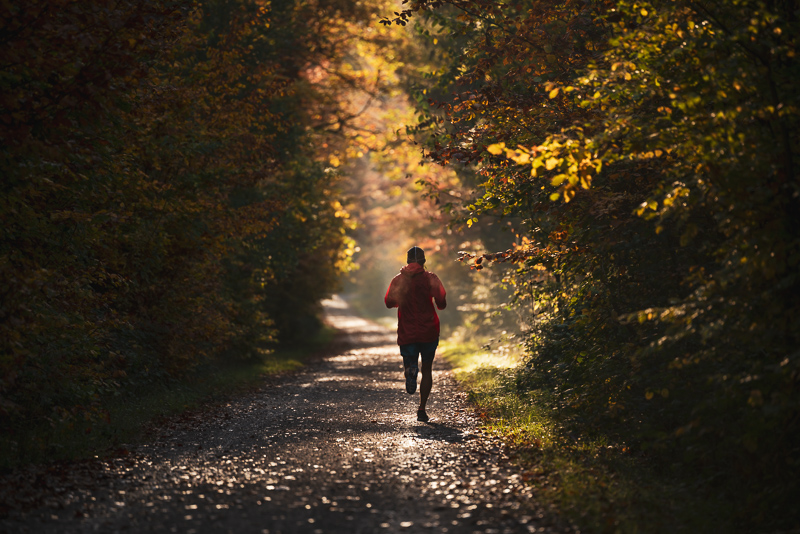
Sony FE 70-200mm 2.8 GM OSS II
- great image quality
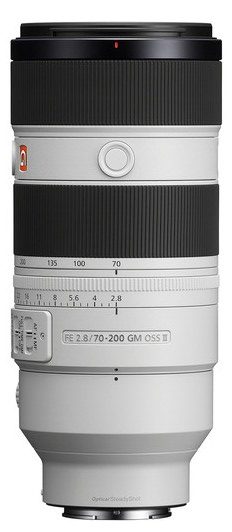
- very fast autofocus
- very nice bokeh for a zoom lens
- noticeably lighter than its predecessor but also more expensive
The professional fast telezoom the E-mount world deserves. If sports are your thing you will be very happy with the AF, for portrait applications I wonder if it is a bit over the top at almost three grand though.
1045g | $2798 | Review
buy from amazon.com | amazon.de | B&H | ebay.com | ebay.de (affiliate links)

Sony FE 70-200mm 2.8 GM OSS
- good image quality but not as good as its successor or some of
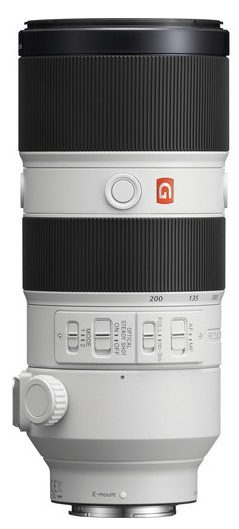 the competition
the competition - mostly smooth bokeh but strong cat’s eyes and onion rings
- very big and expensive
- seems to have pretty poor reliability
Not nearly as good as the MK II version and way too expensive compared to the Tamrons. Not recommended.
1480g | $1898
buy from amazon.com | B&H | Amazon.de | ebay (affiliate links)
Adapted AF lenses
Canon EF 85mm 1.2L II USM
- thanks to the f/1.2 maximum aperture a lot of bokeh but more of
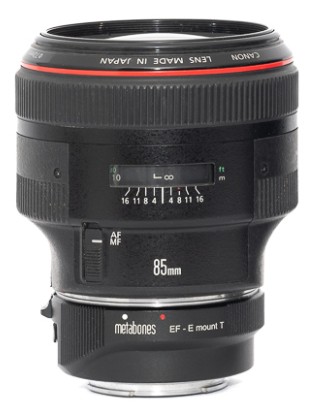 the vintage type with lots of outlining
the vintage type with lots of outlining - surprisingly good sharpness at f/1.2
- bad CA correction
- bad flare resistance
- generally good build quality but focus-by-wire
Its design is from 1989 and it is surprisingly sharp for that. The bokeh is not very smooth at longer distances though, so it is more for those among you that are looking for a combination of vintage look with autofocus.
974g + adapter | $800 (used) | Review | aperture series
buy from amazon.com | amazon.de | B&H | ebay.com | ebay.de (affiliate links)

Canon EF 135mm 2.0L USM
- Very well balanced lens with a good combination of sharpness,
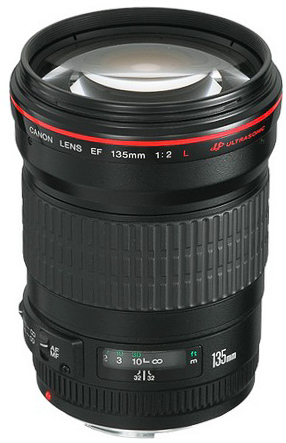 contrast (already at maximum aperture) and bokeh
contrast (already at maximum aperture) and bokeh - correction of longitudinal CA not as good as some of the newer 135mm lenses on this list
- Decently priced 135mm portrait lens with a fast maximum aperture of f/2.0 and autofocus
Still a great deal today with more than enough resolution, very smooth bokeh and all that at a reasonable size and price.
708g + adapter | $500 (used) | Review | aperture series
buy from ebay.com | ebay.de
| Amazon.com | Amazon.de | B&H (affiliate links)
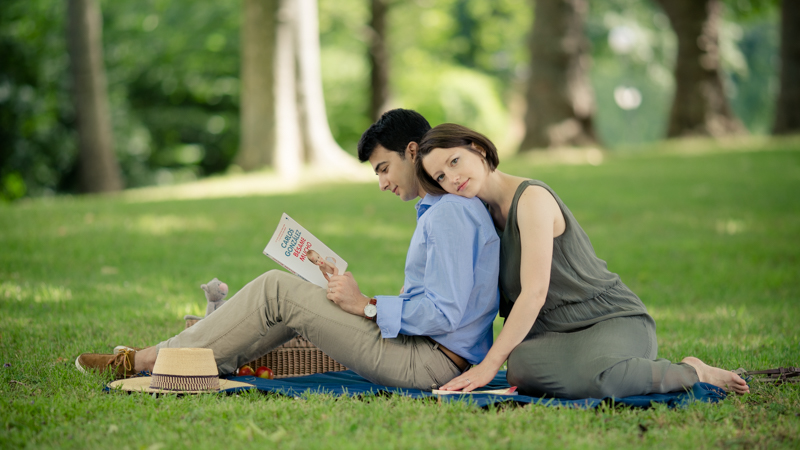
Canon EF 200mm 1.8L USM
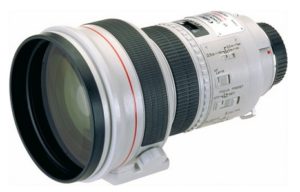
- Absolutely gorgeous bokeh rendering and at the same time super high resolving
- adapts well to Sony cameras, on gen 3 cameras you even have eye AF
- super heavy, very expensive, unclear spare parts situation
An absolutely amazing portrait lens. Apart from the high weight and price the real issue is that these are hard to get repaired these days.
3020g + hood + adapter | $3000 (used) | Review | aperture series | sample images
buy from ebay.com (affiliate links)
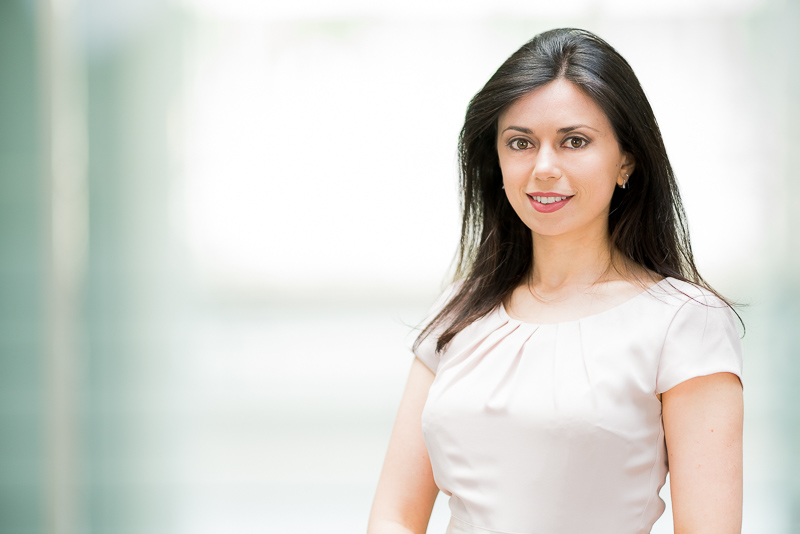
Canon EF 200mm 2.0L IS USM
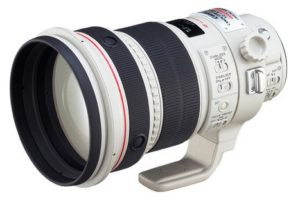
- Maybe the highest resolving lens I ever used on my camera
- Great bokeh
- adapts well to Sony cameras, on gen 3 cameras you even have eye AF and the in lens IS is very effective
- heavy (still light compared to the competition), very expensive
An absolutely amazing portrait lens. This is a 1/3rd of a stop slower than its predecessor but imho the better lens in the end.
2520g + hood + adapter | $3500 (used) | Review | aperture series | sample images
buy from amazon.com | B&H | ebay.com | ebay.de (affiliate links)
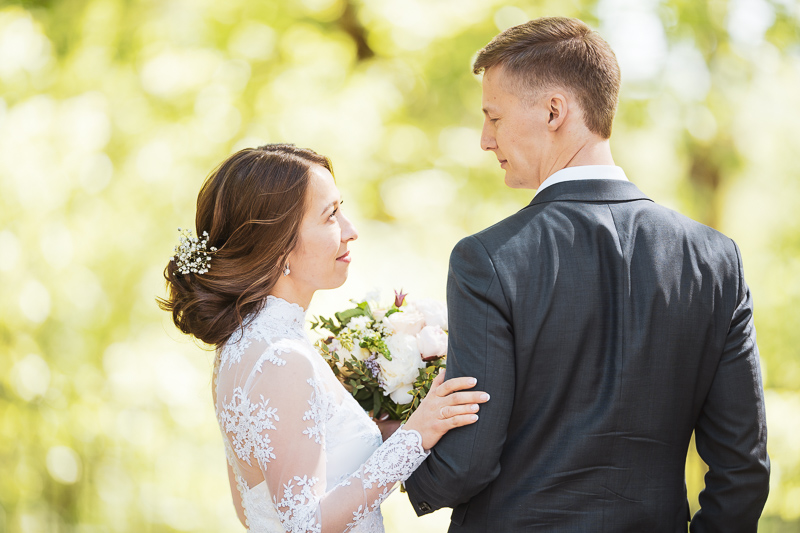
Nikon AF-S 200mm 2.0G IF-ED VR
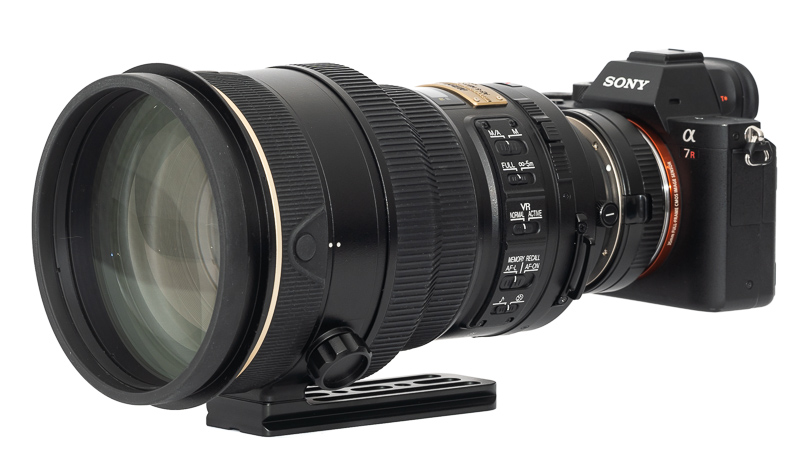
- spectacular bokeh
- excellent sharpness and contrast everywhere
- very good correction of longitudinal CA
- good coma correction
- very fast AF
- flare resistance could be better (MK II version with nano coating allegedly better)
In my opinion Nikon found the ideal balance of high contrast and resolution in the focal plane and beautiful out of focus rendering here and they managed to do so with a perfect correction of longitudinal CA. For portrait applications my favorite out of these super fast 200mm lenses.
2910g + hood | $2500 (used) | Review coming soon
buy from ebay.com | ebay.de | B&H (affiliate links)
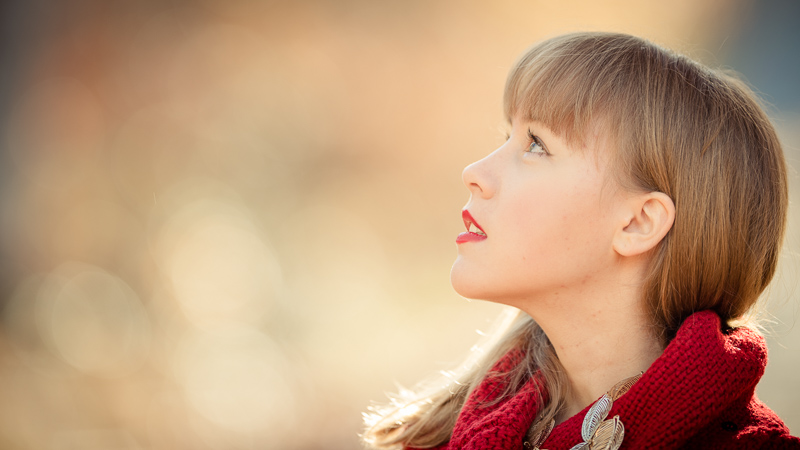
Adapted manual focus lenses
Using manual focus for portraits requires some skill and won’t work for any subject, but you can save a lot of money or get special lenses if it works for you.
Samyang 85mm f1.2 XP
- beautiful bokeh
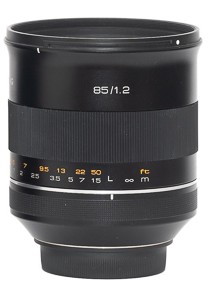
- very good sharpness from f/1.2 at all distances
- good coma correction
- decent CA correction
- average vignetting figures and flare resistance
- very big and heavy with 86mm filter thread
There is no lens with actually bad bokeh on this lens, but this is definitely one of those standing out for looking particularly appealing. As it is a heavy manual focus only lens most people will be better off with one of the 85mm 1.4 AF lenses though.
925g | $799 | Review coming soon
buy from amazon.com | B&H | ebay.com | ebay.de (affiliate links)
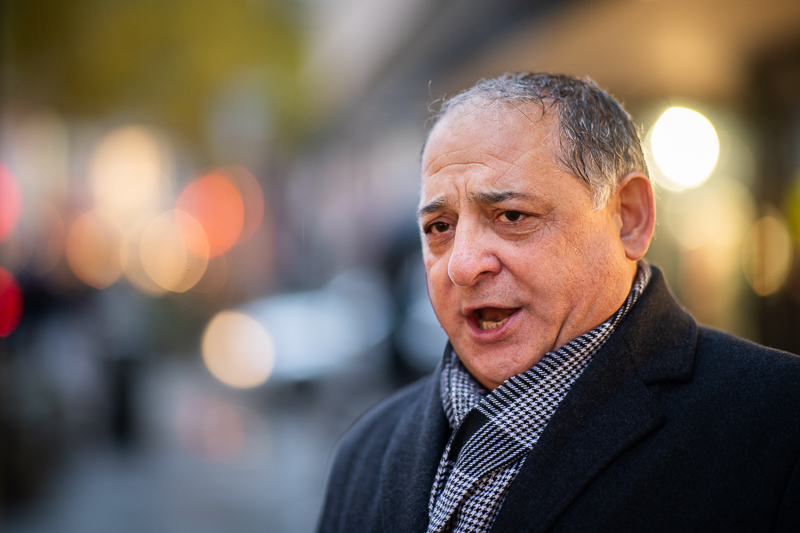
Canon FD 85mm 1.2 Aspherical
- At f/1.2, the center has usable sharpness, the midfield and the
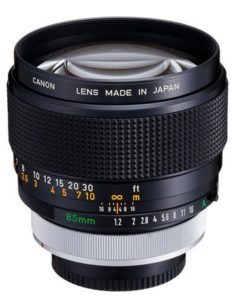 edges are not sharp. Because of spherical aberrations contrast is quite low.
edges are not sharp. Because of spherical aberrations contrast is quite low. - The whole image sharpens up a lot at f/1.6, the center is very good as is the contrast from this aperture.
- The bokeh is smooth at typical portrait distances but gets a bit nervous at longer distances
- Flare resistance is bad.
- Large size and weight, very good build quality.
- The FD L is optically the same with one aperture blade less and coatings might be better.
It was a revolutionary lens in it’s day but today it is a little hard to recommend unless having an f/1.2 lens is very important to you.
The original Aspherical version depicted in the picture sells for several thousands of dollars these days, the optically same later nFD 85mm 1.2 L can be found < $1000, there is no reason to get the super expensive one.
756g | $900 used | Review
buy from ebay.com (affiliate link)

Samyang 85mm f1.4 MF MKI and MKII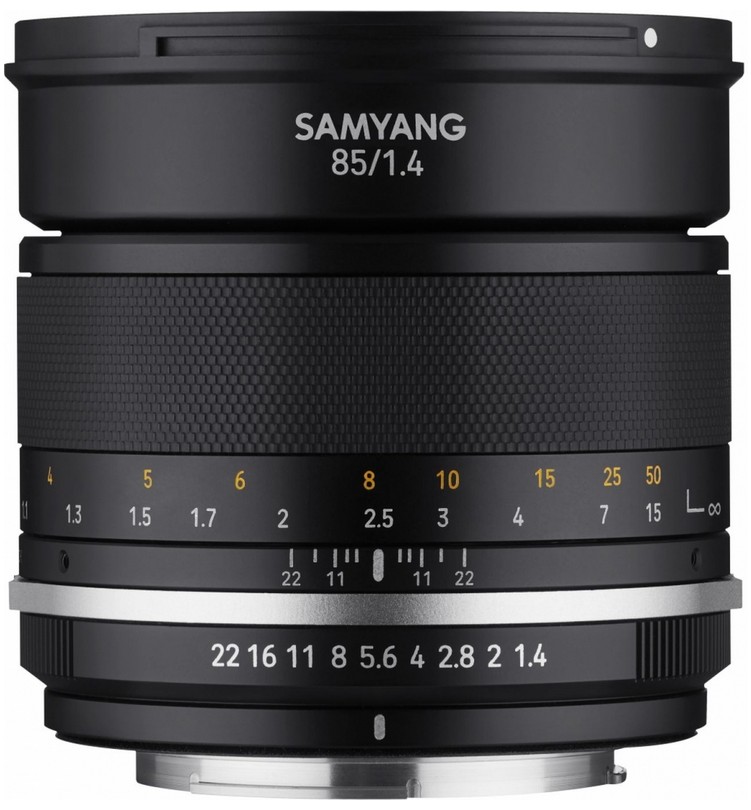
- Good enough sharpness from wide open
- Very smooth bokeh
- Average flare resistance
- Below average build quality (MKI)
- Very affordable
If you feel like you need a f/1.4 lens and are on a limited budget this might be your lens since it offers a good price/performance ratio.
Interestingly this lens has been rereleased in 2020 with improved mechanical design, but that version is too expensive compared to some of the modern AF lenses on this list.
480g | $250 (MKI) $400 (MKII) | comparison MKI with other 85mm lenses | photozone review on Canon FF
buy from B&H | amazon.com | amazon.de | ebay.com (affiliate link)

Jupiter-9 85mm 2.0
- Small low cost rangefinder portrait lens
- Smooth Sonnar out of focus rendering (vintage like)
- Sharp enough for portraits but not that great contrast and across frame resolution
- Watch out for lens flares (or make use of them in your pictures)
Cheap, small, very smooth bokeh. But if you are looking for high resolution, high contrast and good flare resistance this is not for you.
318g + adapter | $140 | Review | aperture series
buy from ebay.com | ebay.de
(affiliate links)
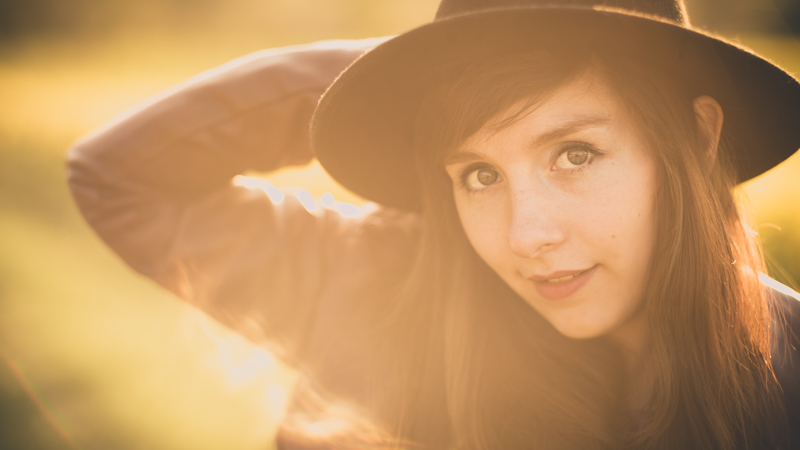
TTArtisan 90mm 1.25
- Nice bokeh and a lot of it for the money
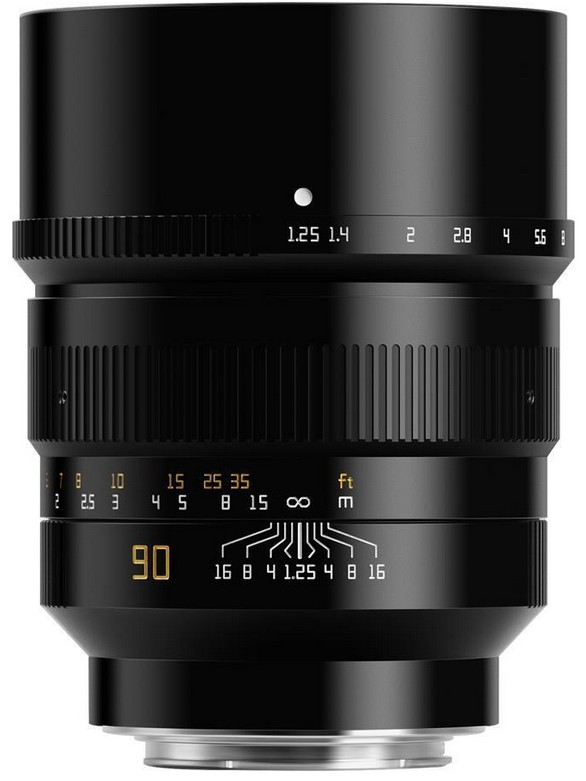
- Good sharpness at portrait distances at wider apertures, stopped down good enough for infinity shooting, too
- Bad flare resistance
- Big and heavy but nice build quality
A lot of blur for the money, but being a heavy lens without autofocus this is mostly suitable for staged portrait scenarios
~1000g | $458 (E/Z/R/L-mount) / $648 (M-mount) | Review | aperture series | sample images
buy from the manufacturer’s shop, amazon.com, ebay.com/ebay.de or B&H (affiliate links)
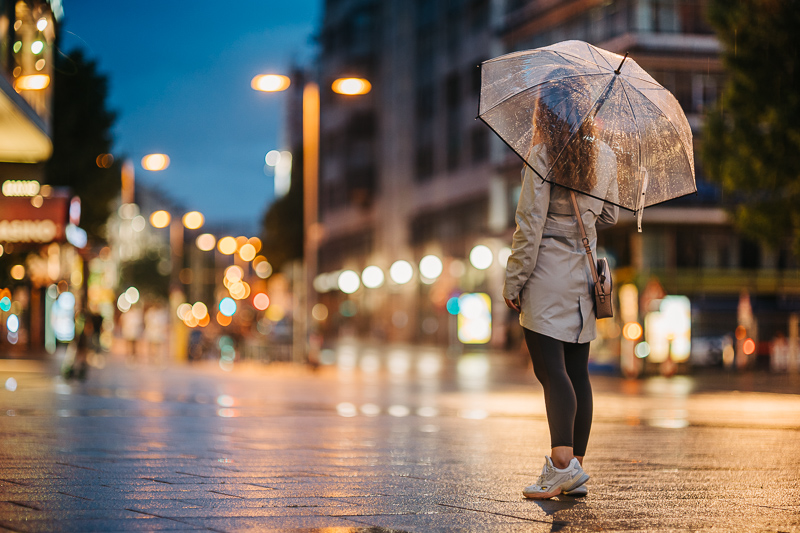
Leica Summicron 90mm 2.0 pre Asph
- Very nice contrast and resolution across most of the frame
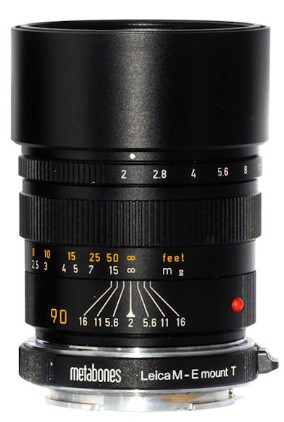 already wide open, corners need stopping down to f/5.6
already wide open, corners need stopping down to f/5.6 - Bokeh generally very nice, but not as smooth as some modern lenses (“Mandler bokeh”), slightly stopped down “crown cork” shaped highlights
- Nicely balanced on mirrorless cameras
- A bit on the expensive side due to red Leica dot
It is a bit expensive for what it is, but it is a joy to use and has very high contrast for such an old design.
475g + adapter | $850 | Review | aperture series | sample images
buy from ebay.com | ebay.de (affiliate links)
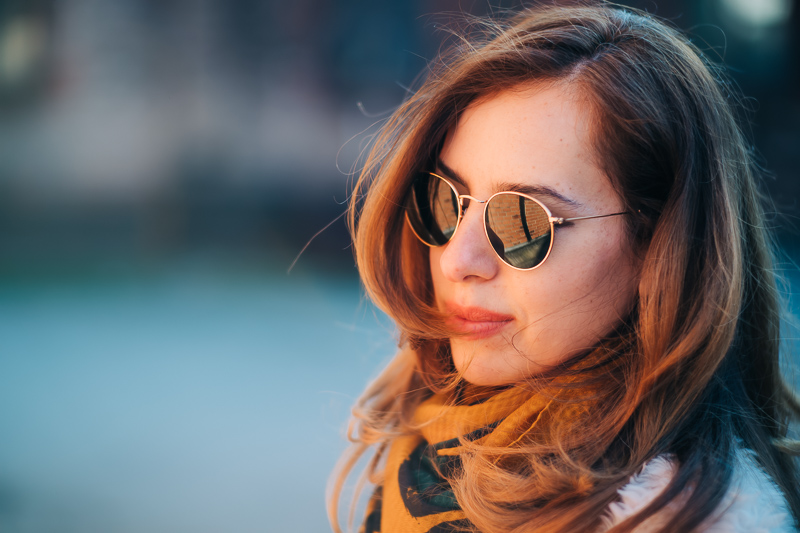
Olympus OM 100mm 2.0
- Sharp across the frame with good contrast from f/2 so you can place your subject anywhere in the frame
- Average flare resistance
- Very smooth bokeh
- Moderate size and weight, very good handling
- Rather rare and pretty expensive
If you enjoy manual focus for portraits then this could be your lens. It gives excellent results and is very enjoyable to handle since it is very well balanced.
520g | $750 used | Review | aperture series
buy used from ebay.com (affiliate link)
Minolta MD 100mm 2.5
- At f/2.5 it is sharp across most of the frame.
- Bokeh is smooth with some CA and average cat’s eyes.
- CA is quite strong but for portraits that is not much of an issue.
- Prone to flare.
- Small size and weight, average build quality.
- Good price/performance ratio.
A well balanced legacy lens and a good lens to get started on a tight budget.
310g + ~80g for the adapter | $120 | Review
buy from ebay.com (affiliate link)
Zhong Yi Mitakon 135mm 1.4 Speedmaster
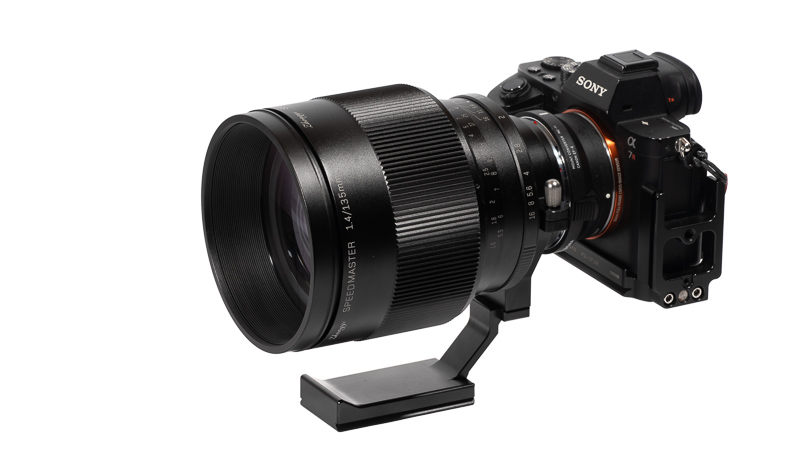
- Wonderful bokeh rendering
- good sharpness and contrast across most of the frame
- almost apochromatic correction
- hard to operate due to being a manual focus lens with a lot of weight on the helicoid
- super heavy, very expensive and extremely rare
A completely absurd lens and probably the dream lens for anyone heavily into Brenizer/Bokehpanorama. For almost everyone getting one of the way easier to handle 135mm 1.8 lenses with AF is obviously the more practical choice.
2525g (lens) + 255g (hood) + 175g (tripod collar) | ~$3000 | Review | aperture series
buy from ebay.com/ebay.de (affiliate links)
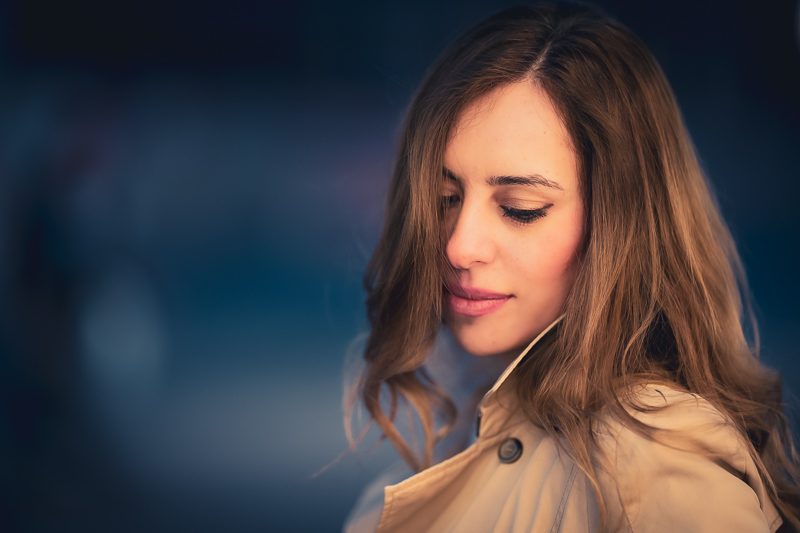
Carl Zeiss APO Sonnar 135mm 2.0
- Superbly sharp and ultra low CA at every aperture. When first
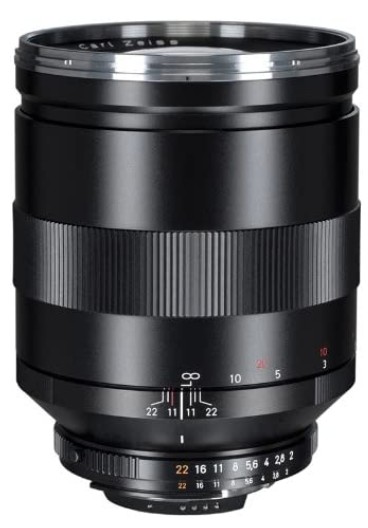 released many thought it the best full frame lens for any mount. Still very competitive.
released many thought it the best full frame lens for any mount. Still very competitive. - Beautiful lower contrast bokeh in comparison to focal plane.
- Low optical vignetting for a 135mm lens
- Good flare performance. Milvus version of the same design is even better in this regard, but probably not worth the extra money.
- Nice handling, though not light.
- Best purchased used.
Due to Sony FE 135mm 1.8 GM and Samyang 135mm 1.8 AF this is mostly interesting for the true Zeiss fans these days
930g | from $1000 used
buy from eBay | amazon.com | B&H (Milvus version) (affiliate links)
Samyang 135mm 2.0 MF
- At f/2 already very sharp, almost no chromatic aberrations
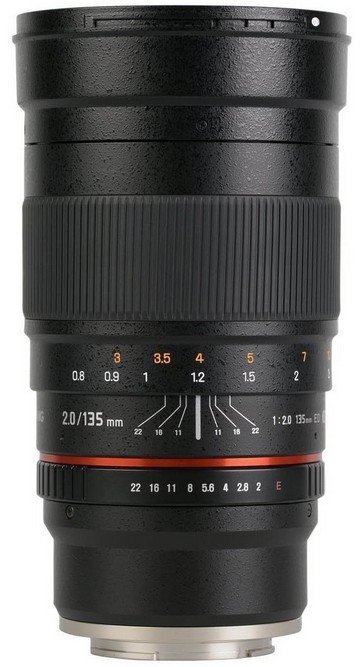
- Good bokeh despite of some cat eyes wide open
- Quite prone to flare
- Different color cast compared to Sony or Zeiss lenses (slightly warmer)
- I never heard of broken samples due to bad quality (In contrast to the Samyang 2.8/14) but the build quality still feels not great.
- Excellent lens. Optically, you get 90% of the Zeiss Batis 2.8/135 performance at a very low price. Keep in mind that AF is useful for some portrait scenarios.
A lens with high performance but also very big and heavy and therefore not that much fun to use. It seems many people only use it as a step stone before getting a portrait lens with AF.
830g + adapter (native 900g) | $400 | Review | sample images
buy from ebay.com | ebay.de
| Amazon.com | Amazon.de (affiliate links)
Olympus OM Zuiko Auto-T 180mm 2.0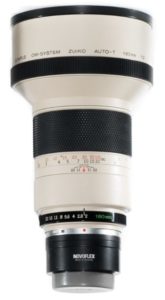
- Bokeh rendering not as great as the 200mm 1.8 but still amazing
- Small and lightweight for what it is
- Very complex and modern design for its age with superior minimum focus distance and sharpness at all distances
- Extremely rare and super expensive
Extremely rare and therefore super expensive. I wish and doubt we will ever see a lens like this again.
1700g + tripod collar + adapter | $2500-5000 (used) | full Review | aperture series | sample images
buy from ebay.com (affiliate link)
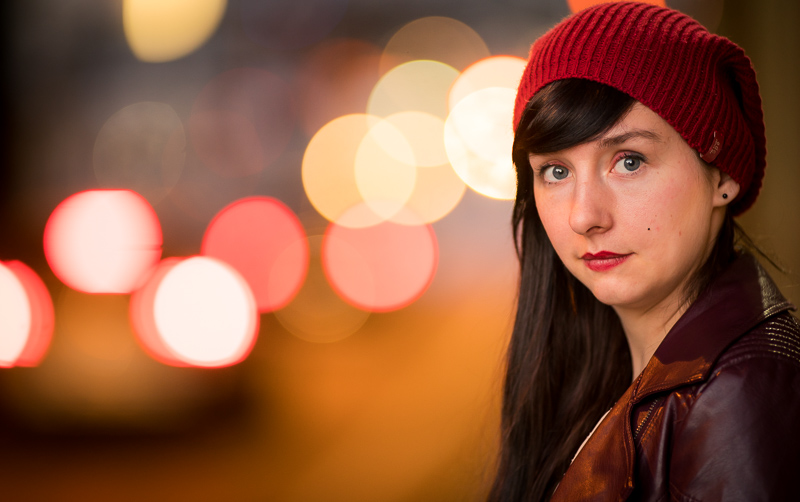
Carl Zeiss Jena Visionar 168/183mm 1.9

- Amazing bokeh rendering
- no aperture diaphragm, no focus ring (see reviews for further information)
- portrait specialist and great choice for Brenizer/Bokehpanorama
- somehwat rare but comparably cheap
The handling needs getting used to, but these lenses offer bokeh rendering of lenses usually 10 times as expensive
2500-3000g | $300 (used) | full Review 168/183 | sample images 168/183
buy from ebay.com (affiliate link)
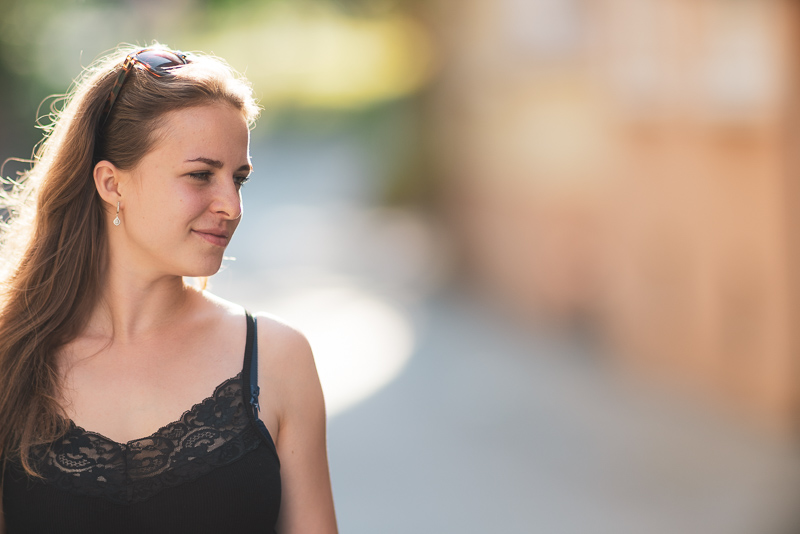
Nikon 200mm 2.0 IF-ED Ai
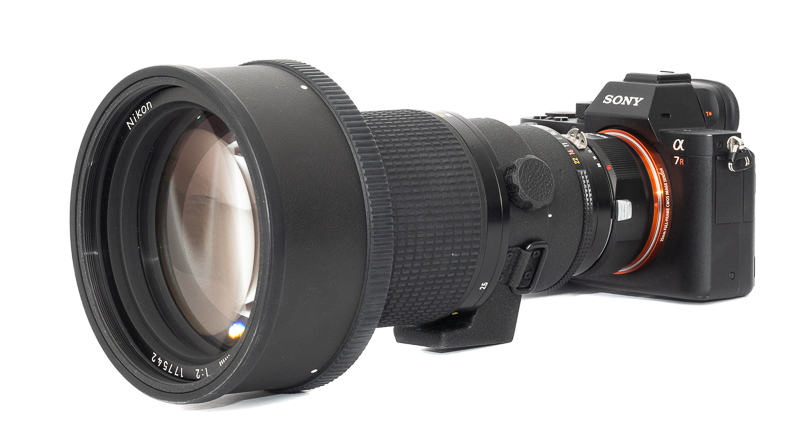
- very nice bokeh
- good sharpness at portrait distances
- good coma correction
- mediocre flare resistance and CA correction
- great build quality (no electronics)
- minimum focus distance only 2.5 m
The bokeh this lens creates sure is still great 40 years later, but the optical performance is no match to the Nikon AF-S 200mm 2.0G VR or Canon’s super fast 200mm lenses. I would rather get Nikon’s AF option for a little more money (which is what I did).
2472g | $1800 (used) | Review
buy from ebay.com | ebay.de (affiliate links)
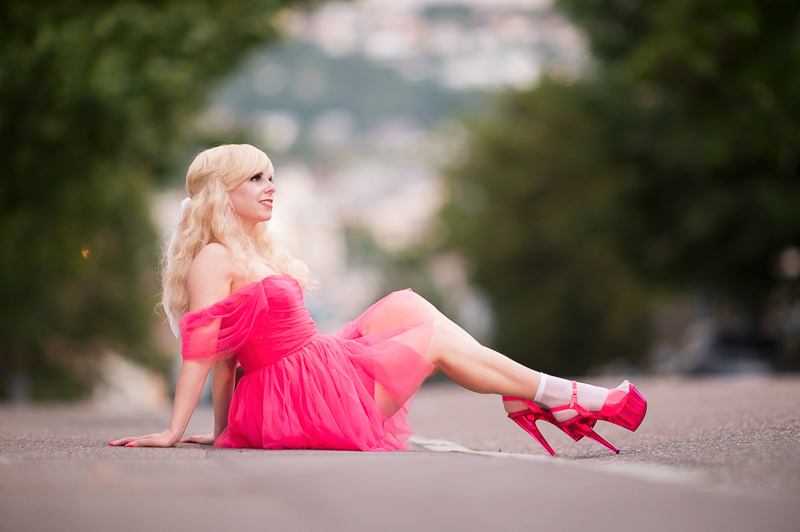
Closing Remarks
Yes, we didn’t include a bunch of interesting lenses. We have reviewed many lenses but there are far more lenses we haven’t reviewed yet and we prefer to know what we are talking about. So with time the list will grow, but have some patience with us 🙂
Articles like this require many hours of work. If you found it helpful, you can support us by:
- Using one of our affiliate links if you buy a lens (or anything else, diapers for example), won’t cost you anything extra but helps us a lot.
- If you own an interesting and/or exotic lens and you would be willing to part with it for a few weeks for us to write a review just leave a note.
- It also helps a lot if you share this article on social media and with your friends.
Thanks!
Other Articles
Support Us
Did you find this article useful or just liked reading it? Treat us to a coffee!
![]()
![]()
![]() via Paypal
via Paypal
This site contains affiliate links. If you make a purchase using any of the links marked as affiliate links, I may receive a small commission at no additional cost to you. This helps support the creation of future content.
The Team
Latest posts by The Team (see all)
- Sony FE Lenses: The honest Guide for the A7/A9/A1 Series - March 18, 2025
- Guide to best Sony E-Mount 35mm Lenses for A7/A9/A1 series - March 8, 2025
- Guide to the best Portrait Lenses – Sony A7/A9/A1 series - February 22, 2025
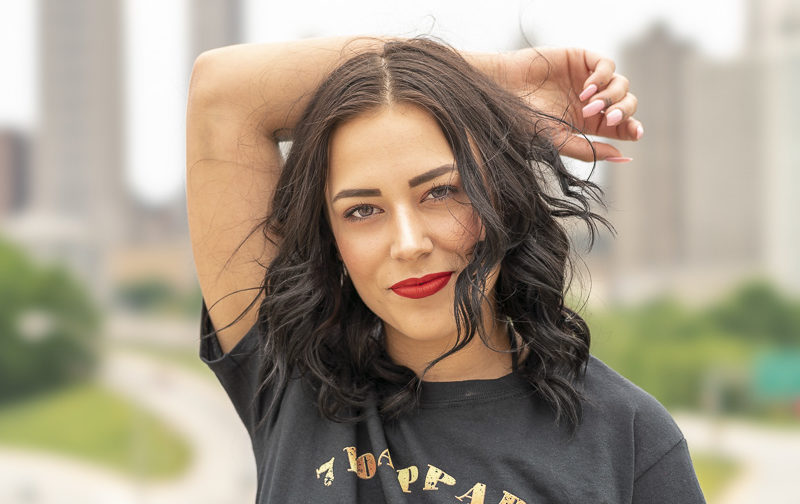
I’m a bit surprised you don’t mention the Minolta 100mm f/2.5. I bought it based on the review on this site (“bokeh among the best I have ever seen”) and have been happy with it. The bokeh is indeed very creamy. MF is hard, still practicing…
It is indeed a fine choice. Will add it later.
I wanted to point out exactly that lens. After Phillip’s review I bought MC version to check it out and later the latest 49mm MD version which is even more compact while delivering the same image qualities. It’s my #1 choice for portraits, and I also like the a bit more crop and compression of 100 mm vs 85. Thanks for the recommendation.
Btw. I love these kinds of “user guides” or personal summery. What greater award can a lens have then being bought by the photographer with his own money and still being in actual use. This kind of information is very valuable for me. That’s why I prefer your long-term reviews over any kind of review anywhere else. You can’t just qualitatively talk about a lens after spending just some hours or days with it. I rather prefer an trustworthy in-depth review months or even years after release over any same-day non-sense. Thank you, guys!
Glad to read your comment 🙂
I can recommend some excellenr vintage lenses that wasnt in the review, and thats understandable because there are so many vintage lenses.
Anyway here are they:
Super-Takumar 85mm f1.9 (m42)
Nikkor 85mm f1.8
Nippon kogaku nikkor-p auto 105mm f2.5
Minolta mc Rokkor 100mm f3.5 macro
Canon fdn 135mm f2
MC Carl Zeiss jena Sonnar 135mm f3.5 (m42)
As usual a very good overview!
For portraiture I also like the 50mm lenses, especially for handheld portraiture a rather small and not heavy FE 55 f1.8 is very nice to walk around with.
There will be another article for 50mm lenses.
Maybe even two articles (one covering portraiture, the other covering landscape).
That would be great!
Looking forward reading those articles too! Thanks for your efforts 🙂
How does the Voigtlander 110mm APO Macro do in the portrait category? Eagerly awaiting the review and thinking of using it as my go-to lens for portraiture and macro (currently without a macro and use Sony 85 for portraits).
It is actually the portrait lens I use the most at the moment. But since it none would buy it just as a portrait lens I didn‘t include it here. It is super sharp with pleasant bokeh. Downsides are average cat‘s eyes and a short but not too short focus throw.
Looks like you’ve updated the review with a little info- thanks! I would buy this lens today if I could find it here in China.
Great write up as usual. Funny to see that the 85mm is the lens choice of all 3. But I can see the compromise of size/weight and quality makes the 85mm the choice focal length.
Curious why the “bokina” didn’t make it? The 90mm f2.5 Tokina seems to make a lot of other lists for a great portraits lens.
The Bokina is probably too slow for a 85/90mm lens. And the focus throw is a little bit too short at portrait distances.
Although I use mine often for portraiture.
I think the bokina is more of a multi purpose lens. Its good for landscape (very sharp), for macro (1:2 ratio) and for portrait (smooth bokeh) but it doesn’t excel at any discipline. For macro there is no 1:1 ration, for landscape the flare resistance isn’t the best and for portrait it lacks the speed of dedicated portrait lenses. That beeing said its often in my bag when I go outside to shoot because its just a very versitile tool.
I’m interessted to see which lens Phillip will pick as his favorite portrait lens.
Would agree with that assessment. For similar reasons I chose the Voigtlander 2.5/110 as my portrait lens.
I’ve accumulated a set of old manual focus 1970s ish Nikkor primes which I mount to my a7 family cameras with a Metabones F to E adapter. These used lenses are high IQ, fast and cheap.
Some notes on the Canon FD 85mm f/1.2:
1) For best performance, it needs a thin sensor stack conversion. There’s a dramatic difference in sharpness across the frame from the standard sensor stack and a thin stack conversion. The circle of usable sharpness in the center is much larger as a result of a reduction in astigmatism.
2) Since it’s a floating element design, having an adapter with the right register distance matters.
1) Is that documented anywhere?
2) I used a Novoflex and also experimented with a shimmed K&F without much effect.
Here are some comparisons that I had shared in FM a while back. I need to do a larger test with some closer focus comparisons though. I haven’t compared whether or not the bokeh is affected at all yet either.
https://drive.google.com/open?id=1-XpWprgjnoKH8diItsHxFLO7DAEjsfQH
That looks quite a bit better indeed. Thanks for sharing!
Correction:
Canon 135/2 = 750 grams
Thanks for the write up.
There is a race going on for big and heavy, resolution be damned !!
The weight stated here is correct. I always put the lenses I review on scale.
It is the weight without hood and caps though.
That explains it. 750 must be with caps etc
Also, you can change the title of the article from “user guide to portrait lenses: for a7 series” to “user guide to portrait lenses: 85 to 135mm”,
I think, and many others do, that 50mm is the best portrait lens 🙂
No, 50mm deforms the face of your subject.
Depends. If head shots and head and tight shoulders shots, then you are right.
Actually, it’s the distance between camera and subject that matters. Less than 1.5 m / 5 ft, and you’ll get big noses. You can use any focal length you like, as long as you keep that distance. Take a wide angle, and you’ll get an environmental portrait.
That is only true when talking about placing the subject in the center of the frame.
You could shoot portraits with any focal length, right? But the classic focal lengths are between 85 – 135 mm. That is covered here+ bonus section. Expanding this to 50 mm neither cover all portrait lenses nor are there only a few 50’s to add.
Thank you for this interesting review as always. Regarding the comparison between the three native 135mm (Sony FE 135mm 1.8 GM, Sigma 135mm 1.8 Art, Zeiss Batis 135mm 2.8), my first thought is: speed, weight, price: pick two. You say the Batis is expensive, which is true, but still cheaper than the Sony.
Just a side comment. I dont get the current obsession with bokeh. These are not portraits to me but nice pictures of faces with blurred backgrounds. Where’s some kind of *setting*? Background, story, idea? These all look the same to me.
I blame you (revievers) for that bokeh focus too 🙂
Busy cat eyes, onion rings, that is just plain silly.
But I get it. Lenses became so good these days you have to invent something new to brag about. Cheers.
what about the Canon FD 85mm 1.8?
Its not the same bargain as the FD 135mm 2.8, but for people on a budget looking for a 85 its in my opinion a more available and reliable option compared to the Jupiter9
Thank you for this interesting review.
What do You think about Canon EF 100mm f2, Canon EF 135mm f2.8 and Contax Zeiss 135mm f2.8? They are relatively small, light and inexpensive. Thanks in advance.
We don’t have personal experience with any of them.
Thankyou for a quick comparison, it’s helpful.
Don’t forget Contax 100/2, it is a good choice too.
: )
Has anybody of you tried the Nikon 85mm f1.4 AI-S?
I’m recently into analog photography (with Nikon and Minolta bodies) and the Nikkor 85mm 1.4 AI-S has a great reputation and has somewhat of a legendary status.
I would be interested if that is justified or merely another internet myth (like the Contarex lenses – your article was something of a myth buster).
Thank you and keep up your great work!
From what I have seen it is very similar to the Samyang 85mm 1.4, except for nicer mechanics.
suggestion for “adapted AF lenses”: Canon EF 1,8 / 85 : quite cheap, even new – at least, if an adapter is already in house.
Interested in getting my example for some time ?
Thx for your reviews !
Wile not as good as the Sony it is certainly a solid and affordable option. Since there are many reviews out there and we are well enough covered I don’t think any one of us would have a use for it but thanks for the offer.
And the 3 Minolta MD 85 mm 1.7, 2.0 and 2.8 varisoft?
Any good?
https://www.samyanglensglobal.com/en/product/product-view.php?seq=418
I know you guys have low bars for Samyang lenses, but Samyang just announced AF 85mm F1.4 FE. By comparing MTF charts they published(I highly suspect it is just software calcualtions), its resolution is somewhere between 50mm F1.4 FE and 135mm F2, of course. I think the problem is FE 85mm F1.8 is a really excellent for budget lens.
We will wait out other people’s reports and then decide. David just bough a Samyang 2.8/35 and liked it.
Too bad that you seem to rule out Nikon.
Of course you tried so many different lenses for this comparison, yet the Nikon 105mm is not among them.
I guess I‘m not the only one who is praising this lens specifically for it‘s fantastic abilities concerning portraits.
I would go as far as to claim it is an ideal lense for portraits in quite every regard.
For manual lenses I think the Milvus 85mm is one of the best out there!
However- thanks a lot for all your work here on this site.
I guess you are talking about the AF-S 105mm 1.4G?
Unfortunately one needs that Commlite adapter to use this lens on a Sony camera
and unfortunately my experiences with Commlite adapters have been seriously bad.
Klar – das 105e 1.4 meinte ich.
Da gibt es scheinbar verschiedene Versionen des Commlite Adapters. Bei Fredmiranda gibt es da aber einige vielversprechende Beispiele, u.a. von jefonyx ( hat großartige Portrais auf seiner Webseite unter jef-quach.com, wo er für viele Portrais sehr erfolgreich das 58mm 1.4 von Nikon, und auch das 105mm 1.4e an Sony a7iii benutzt).
In Diskussionen scheint der Tenor dahin zu gehen, das sich die neueste Pro – Version dieses Adapters für einige dieser Nikon-Objektive schon lohnen kann, allerdings wohl nur für diejenigen, die jene Linsen bereits im Arsenal haben und neben Nikon auch Sony alpha nutzen.
Seit der Z6 und Z7 gibt es da ja Alternativen, nur das man da jetzt nach Adaptern für die besten Sony e-mount Objektive sucht , bzw. für sämtliche Objektive von Fremdherstellern für das Sony e-mount System.
Sehe mich jedenfalls schon mit adaptierten Voigtlander oder Zeiss MF-Linsen an einer Nikon Z6.
Schon verrückt, diese Entwicklung…
Nikonos!
Where can we see example of your adapted voigtländer and Zeiss lenses on Nikon Z6?
Thanks
/MH
I have Samyang 135mm f2.0 and I use it mostly for deep space astrophotography and portraits. Its amazingly sharp
Hi,
This one is missing from:
https://phillipreeve.net/blog/guides/
All the best!
fixed, thanks
Great article – thanks!
New option to add –
Samyang/Rokinon AF 85mm f/1.4 FE
For the Sony FE 70-200mm 2.8 GM OSS performance
See at the 18 minute mark this video
Miguel Quiles “Shooting Portraits Wide Open vs Stopping Down Part 2”
https://youtu.be/3lgAtPmTUMc
I read it using machine translation.
Thank you for the interesting article.
I also like manual lenses.
Hi
Thanks for the very nice and almost exhaustive comparison. Really appreciated but why none of Nikon’s manual focus lenses are among these?
Nikkor 135 AI-s F/2.8 or f/2 or f/3.5? Or Nikkor Ai-s 105mm F/2.5?
Some of these lenses are very highly praised and even adored and other sites but it seems that Nikon doesn’t go well on this site…
There are so many lenses on this range, that it’s even hard to cover all the possible favorites of everyone, or be fair to make great portrait lenses, especially old.
Jupiter 8.5cm f2 is covered. However, this is a copy by KMZ or Arsenal, made through over 3 or 4 decades, which extreme variability on quality and very high sample variety, of the original Zeiss 8.5cm f2 first developed in the lat 30s, later ported to Exakta mount, and finally, the finest expression of this lens in Contarex form around 1962+. The Contarex version is the best built portrait lens ever to see the light of day. A (classic) Sonnar and usually dismissed as just ok.
However, it is the most refined of all classic Sonnars (those with 7 elements in 3 groups that follow a formula with only 3 air/glass transitions, and having been perfected for the smoothest rendering of almost all 85mm, and 8 blades for very smooth creamy bokeh, is underappreciated by most). It follows the same principle as the Sonnar f1.5 in Contax RF mount.
It’s broadly seen by those that have never used it, to be an expensive collector item. However, it’s not. It’s a very high resolution lens, one of very few that have almost perfect reduction in microcontrast as you increase lp /mm, with tangential and radial lines almost overlaid, which is not exactly the same as the 85/2 Exakta nor 85/2 Contax RF.
So the effect is an extremely very gradual reduction in microcontrast as it gets closer to the edges, never going below 40% lp /mm at 40 lp /mm thus not at all low resolution, but actually extremely high, but smothly transitioning, unlike most and many lenses recommended here.
Actually, I have seen very little attention posted by any of the posters, regarding how mid and corners can be drastically different in taste, and anything is only described in a way that’s akin to thinking of ketchup, tomato dip sauce and tomato paste as if they where the same. The softness around the edges are extremely different depending on what causes it, and if it’s a result of astigmatism, and the degree present of type, vs field curvature, vs chromatic aberrations caused it.
I think this is an area of opportunity, since I’ve seen too often that the Phillip, Bastiak, etc. do not seem to be able to characterise or describe anything about how a lens transitions to less sharp areas of lenses, except in blunt terms (“softer”, “weaker”, etc), and “see for yourself”. Again, this contrast in being able to describe, with words, the quality of the bokeh.
I have direct experience a Jupiter (Arsenal made), a CRF 8.5cm, a Contarex 85/2 and Rollei 85mm/f2.8 and can say they all render differently. The 5 elements C/Y 85/2.8 is also one of the most lightweight portrait lenses you’ll ever found. The Minolta Rokkor 85mm (but MC 1.7 and MD 2.0 versions) are very solid portrait options, and so is the Varisoft one, who’s effect can never be reproduced by any post processing. The older Nikkor 10.5cm is also fantastic for portraits, found in CRF, Nikon-S and F mounts (not to be confused with the 105mm f2.5 with Planar design which has a lot more aberrations even if a sharper lens wide open).
The Rollei 85/2.8 is also another very remarkable lens. it weights a little over 200 grams, is smaller than a typical 50mm lens, uses a modern Sonnar design (perfect for an f2.8 lens) which makes it one of the sharpest high micro contrast lenses of all times, and defined the modern look of lenses. It features new kinds of materials and it completely new and different from the 7 element Sonnar that preceded it. It’s sharper by many accounts, even wide open, than the QBM or CY 85/1.4 launched around 1975 (Planar). This lens has instead of 7 elements, only 4, being the only lens that I know that can achieve such remarkable sharpness, ridiculous sharp for a lens launched in 1970. While it’s not important to discuss if it has more or less elements, a good copy has extreme contrast in lieu of having so few surfaces on which light can scatter and bounce, and a huge lower requirement to make all the lenses perfectly centered. I found this one the best lenses for non dreamy, harsh brutal contrast, strong personality portraits. The C/Y sibling renders exactly like it, featuring one extra element possibly improving very slightly corner performance. However, this lens features new style, that has radial lines extremely linear (retaining contrast all the way to the extreme corners) sacrificing tangential contrast. This bodes well for a strong portrait rendering, but makes this degradation of contrast be more like that of modern lenses. Which for me, it’s not the best scenario for a portrait lens.
The missing Minolta 100mm f2.5 is also a great portrait lens, lovely in every way in terms of rendering. The coating by Minolta mean that color rendition is more cold. And another fantastic portrait lens is the Nikkon Ai-S 105mm f2.5, built like a tank.
I think this is a chance for you to start a blog and publish your findings ;). You obviously care greatly about these smaller differences we don‘t find that important from our own experience but mI guess some people will care about them as much as you and will be happy to find a source.
That’s a good point, sarcasm and all it’s great you stop by and respond. In re-reading my post, it has too much history and too little why those 85mm lenses are special (what you get that you don’t get from most of those listed).
Are you guys going to review the new(er) samyang 85mm 1.4 sony with af? Seems like it as incredibly smooth bokeh, more so than the gm
From the comparisons I have seen I don’t come to that conclusion. Bokeh ist very smooth indeed but I wouldn’t call it smoother and optical vignetting leads to stronger cat’s eyes compared to the GM. What has kept me from testing it are reports about AF-issues. These might have been fixed by firmware update now though, I didn’t follow it that closely.
Excellent article. It’s a pity that the focal length segmentation left out Nokton 75 1.5, 7artisans 75 1.25 and no less than Summilux M 75 and R 80 🙂
Samyang FE 85/1.4
No love or attention for Samyang 85mm f/1.4 FE?? With V3 of the firmware, the AF is very good now…and IQ is really close to 85 f1.4 GM, imo.
From what I have seen it is not, but if we ever get the chance to use it ourselves it will be added.
Hmmm. I would encourage you and your readers to watch the reviews below and draw your own conclusions based on the V4 firmware (I mis-typed V3 previously).
Dustin Abbott: July/Aug 85mm Shoot out reviews:
Sony FE 85mm F1.8, Sony 85mm F1.4 GM, Samyang AF 85mm F1.4 FE, Zeiss Batis 85mm F1.8, Sigma 85mm F1.4 ART, and the Viltrox AF 85mm F1.8
Side note: If you watch Dustin’s earlier 2019 review of the 85mm FE Samyang with early firmware versions, he, like many others was quite critical of the AF performance. With the review below, clearly the AF improvements are very significant if not dramatic.
AF with firmware V4: https://www.youtube.com/watch?v=FssZH6VJu7k
@18:54
IQ part 1: https://www.youtube.com/watch?v=dcMOp3BXj4E
@ 16:10
IQ Part 2: https://www.youtube.com/watch?v=G6grZLyHzv8
@16:30
Additional reviews:
Fstoppers–Samyang 85 FE vs Sony 85 GM:
https://www.youtube.com/watch?v=gPqOo3Cm-nQ
Christopher Frost:
https://www.youtube.com/watch?v=HaDz3caJMe0
Personally, after watching several hours of reviews … twice now … I would never spend $1,800 on the 85mm GM . I’m leaning toward the Samyang FE, but also considering the Sigma 105 f1.4 for my portrait work. The Voigtlander 110’s siren song is also calling me.
As said, as soon as we have tried it ourselves it will be added.
Some Youtube videos surely are not enough, epsecially from people I don’t trust a single bit.
I assume your mistrust is based on something concrete…or a personal “trust measuring system” you can share so we, as your readers, can apply that same measuring stock to your posts and this site as well.
Just my personal opinion.
I encourage everyone to have one of their own.
And still no word about great Samyang XP 85mm f1.2…
It’s the sharpest lens this type I ever used. And I used 85mm sigma art f1.4!
Its lighter and despite manual focus its charm to use.
Sharpness is not our main priority in a portrait lens and this lens’ bokeh looks rather nervous to me.
But it is on the list of lenses I would like to review if someone would be willing to part with it and send it to me for a few weeks 🙂
I can do that for yoy if you want?
Just go on my website and contact me directly 🙂
Great work as always! There is one vintage lens described by several reviewers as a portrait lens with one of the best bokeh ever – the Olympus 90mm F/2.0 Auto Macro – someone called it “King Zuiko”. This lens is sharp even at F2 from corner to corner even on my A7r II.
A favourite lens in the days of film, and one which is still sharp by modern standards.
Not sure about best bokeh ever at portrait distances. Wonderful closer up bokeh for sure, but the OM 2/100 had nicer bokeh for portraiture, I thought back then.
Bastian, wait. You mention Jupiter 9 85mm f2 with is an exact cheap replica of Zeiss 2/85 RF and not the original that is much better? I know it’s more expensive, but it is way better (I have several of both). A mention would be welcome in an update since they Lens is almost a tit for tat exact copy of the design). The Sonnar 4/135 makes also a tremendous Portrait lens. It has brutal resolution with lower contrast.
In the review the original is being mentioned.
In this guide though it serves as a cheap alternative to the more expensive modern lenses at a pricepoint of less than $100 for those on a tight budget.
The Zeiss 85mm 2.0 RF is more of a collector’s item at $600 and I find little reason to recommend it to the average reader over many of the modern lenses that are similarly priced.
Thanks, I hadn’t noticed the mention, but nice it’s included to give credit to Mr. Bertele. There are too many choices to list all. Great article as always.
Why is it not mentioned Laowa 105/2 STF.
Because we find it hard to recommend.
BastianK, I have Samyang 135 / f2. It is really great but it is very weak when sun or light in the field or light in the back of subject.
That is actually true for most (or all?) longer lenses.
Yes, I think Sony 85mm and 135mm are better, Am I right?
I am not so sure about that.
I don’t suppose anyone has tried a Canon FL 85mm f/1.8 have they? I love my 55mm f/1.2 for portraits but can’t find any information on the 85mm/1.8 🙁
We haven’t 🙂
Have you tried the Zeiss 100mm f/2 Makro Planar ?
I have taken my favourite portraits with this lens and it is not that old. I used it natively on Nikon D700, now adapted on the Z6. Nikon 105 2.5 AI-s was also highly regarded and I’m sorry I’ve sold mine. Will probably buy again, as it was small, sharp and had a beautiful bokeh.
We have reviewed it. It can certainly yield excellent results. But because I find the focusing to be rather steep at portrait distances, it needs to be adapted and there is still the CA issue we decided against including it in this list.
Recommended Minolta md-III 100/2.5 version only ? What about MD-II ?
Good lens as well, just a little heavier.
Hi there, big fan of this blog. I’m deciding on a next portrait lens for my Sony A7R II and I’m having a hard time deciding between the Samyang SYIO85AF-E 85mm F1.4 (600 USD new) and various adapted options.
I love the pop and color of lenses like the Zeiss Makro-Planar 2/100 (which I can get for 600 USD used + the price of an adapter), and the bonus of macro is great. I understand it didn’t show up in this list, probably because of Axial CA issues, but I’m thinking I can overcome it based on how good it looks in your samples if I can get a good price on it. This also led me to the native Voigtlander 2.5/110 Macro APO-Lanthar, which has the colors and pop I’m looking for, similar to the Zeiss MP. I have found very few samples if any of how good the portraiture is with the Voigtlander, so I’m not sure to bite the bullet there with that. There’s also the Olympus ZM 2/100 which I can get for around 600USD.
I’m trying to optimize for the best micro-contrast and colors, with good sharpness and bokeh that isn’t distracting. Also am trying to stay under $1000. Primary use is portraits but I don’t mind if a lens can do macro, landscape, etc
Any thoughts on this?
In that case I would probably go for the Makro-Planar. Focus throw is a bit short at longer distances and cat’s eyes are stronger than average but otherwise it seems to fit your needs the best.
The 7Artisans 75 1.2 tested by your Team should have an place in this Listing! It is a real nice Bokeh Lens for Portraits.
Great review as always,
I cannot see; Samyang 85mm f1.4 FE, Laowa 105 f2, Laowa 100 f2.8 and Nikon portrait lenses in adapted lenses list.
I think you have some of them in your reviews.
I understand skipping over some of the more esoteric options like Lensbaby’s Composer optics (though apparently the Sweet 80 has a cult portrait following), but I expected to see the Velvet 85 amongna comprehensive list of E-mount portrait lenses, especially considering its unique rendering at wide aperture. Any chance of including it?
I had a look at pictures taken with that lens.
I doubt we will review it anytime soon.
Hi, Does anyone try Tokina atx-m 85mm f1.8 FE?
Hi there, as usual another very useful guide – Like all of your guides, thank you for that.
Specifically, an unrelated discovery bugs me: In the sample image of shots at the header of this lense guide, there is this Portrait of a Writer sitting in front of a typewriter (third pic of second row – https://phillipreeve.net/blog/wp-content/uploads/2019/03/portrait_lenses_FE_header_iamge-2.jpg). Was that originally a photo, one of you authors shot or was it a shot you did, quoting an iconic motive?
Interestingly a very well known YouTube channel copies this very scenery a couple of days back to make of it a how-to about shooting with mixed flash- and daylight lighting (https://youtu.be/t_bqzsAy33w).
Did you know that? I had a “gotcha!” way of feeling…
I took that during a wedding a few years ago, as the groom had such a nice office available. So neither quotation nor relation 🙂
so the YouTuber owes you a royalty 😉
Hi Philip,
I strongly suggest you give a shot to Samyang 85 1.4 AF.
An extra review would be great.
AF on 3rd gen bodies are excellent, but how does it perform on a7 II?
I am somewhat interested in it but this won’t happen too soon 😉
Hi again Bastian,
Do you have any idea about Zenitar 85mm f/1.4?
It has Pretty bokeh.
To be honest, I know nothing about this lens.
But I agree, bokeh in the pictures I have seen looks pretty good.
👍👍 It is also cheap, 400$
I’m sure you don’t need it but if you’d like you can borrow my Sigma 105mm F1.4 Art. It’s starting to come into its own and getting a reputation, and would like to hear your team’s thoughts.
I did some research lately and personally I don’t like what I have seen of the bokeh rendering so far – too harsh for my taste.
There was an interesting interview lately where the Sigma CEO talked about this lens and said it was actually designed for astrophotgraphy (low coma).
Thanks, I checked the interview out. Interesting. The Sigma is certainly peculiar. There are a few instances where bokeh takes on a certain rendering but it’s certainly not something I’d say is very prevalent. The bokeh is crazy smooth most of the time, at least on my copy.
Thank you for this super article.
I am only a baby photographer (recently upgraded to Sony a7iii) and I have been bewildered by the options for portrait lenses.
I has my heart set on the Samyang 85mm f1.4, having seen the results of another f1.4 Canon lens during a recent portrait photoshoot I attended. HOWEVER, having read user reviews on Amazon, I have since ruled it out completely.
I’m now thinking of the Sony 85mm f1.8 (which a number of you guys are saying is a good bet).
Thank you for the natural, relaxed and informative article. You all come over as very experienced, very trustworthy, and very transparent. And that really helps the babies (like me!).
Hi Bastian,
What’s your opinion on the 90 Cron pre-asph vs Loxia 85 for portraits? Also, did you try the 90 summarits, which are priced similarly?
Best,
Paul
That is a very interesting question indeed!
The Summarits were never of interest to me, 90mm 2.0 pre Asph and Loxia 85mm 2.4 I have both used extensively though.
The 90mm 2.0 surely has more blur thanks to faster max. aperture and slightly longer focal length,
the Loxia 85mm 2.4 is slightly smoother with more challenging backgrounds.
The reasons I switched out my copy of the 90mm 2.0 for a Loxia 85mm 2.4 are that the Leica had a pretty strong color cast at maximum aperture which made editing a bit more bothersome and that the Loxia is significantly better at closer distances.
Thank you guys for an immensely helpful overview, as usual. I’m considering a 135mm portraiture lens for my next purchase. However, I’m torn between the A-mount 135mm Zeiss (SAL135F18Z) and the Canon EF 135mm F2L. Both of them are known for the adequate image quality; and in Japan, I can have either of them for more or less the same price (including the respective adapter to E-mount). While I tend to prefer the look of A-mount 135 (it does have that “Zeiss pop”), the Canon 135mm would be a better investment (more ubiquitous, easier to resale…) while deliver a comparable image quality. I noticed that you guys also had the review of the A-mount 135mm, which was not included in this overview. Therefore, if it’s possible, will you please give me some comments on these 2 lenses?
Samyang AF 85mm 1.4 is a solid lens. Maybe you wanna add it to the list.
Bastian, or anybody, do you plan on reviewing the Mitakon 85mm 1.2 in the future? I’ve heard that is quite a nice lens, they make it for e mount and you are sort of the expert on fast portrait lenses so I thought I would ask!
I have shortly used it and found the bokeh rather nervous and busy, so unlikely.
Oh ok, I wonder if voigtlander plans on making something equivalent since they are lacking in the ≈ 85mm area for e mount 🤔
So far they have sticked to smaller lenses, the 75mm 1.5 probably features the biggest lens elements yet (Ø50mm front element).
They have lately patented a 135mm f/1.2 though (Ø113mm front element), I really wonder if there is any chance they will make it.
Introducing a lens with these specs could be a pretty good marketing stunt to introduce a line of auto focus lenses…
Nikon lenses are rare on this site in general but the Nikon 180mm 2.8 ED deserves consideration here. It’s so sharp you start seeing diffraction spikes at F/4. It has a little bit lateral CA but it is pinkish in color rather than magenta which is less distracting and sometimes pleasing when shooting at twilight.
It has already been reviewed but I don’t consider it a great portrait lens.
Balance on Sony cameras is awful due to the center of gravity being so far up front.
Having used plenty of the faster 180/200mm lenses for portraiture the distance to the subject also starts to become a problem, therefore the list tops out at 135mm apart from a few exceptions.
Oops missed it. You are right about the balance! Thanks for the reviews here.
Hi Phillip and team,
I’m looking for a tele lens to pair with my Distagon ZE 35mm f2 and Voigtlander 65mm f2 that despite a very subtle color adjustment required, go pretty well together.
My main use is video (Sony FX3) and I’m thinking of adding the Tokina MF 20mm f2 as the wider element of the “kit”.
I’ve considered the Laowa 100mm f2.8, but it focuses in the other direction and could be somehow annoying.
My other options are:
– Rokinon Cine 135mm T2.2 (around $375/400 used)
– Zeiss Milvus 100mm F2 ($950/1000 new)
Irix 150mm was also considered but could be too long for my use.
Which do you think that would better match as a kit, even with their differences?
Thanks!
The Samyang has a very warm teint which will probably annoy you.
Why did you not consider the Voigtlander 110mm 2.5 APO-Lanthar?
Thanks Bastian.
I’m hesitant about the Samyang because of that color aspect… I don’t care about slight adjustments and it looks great for the price in all the reviews I’ve read. But if the warm tint is very significant, it would certainly annoy me.
My first choice would have been the Voigtlander 110mm, but due to local availability (I live in a faraway country with several importing restrictions & crazy taxes) I would have to pay more than $1500 to get it with duties and everything. Out of my reach…
The Irix 150 would have to be imported too, but since it’s cheaper, the final price would not be prohibitive.
Samyang, Zeiss, Laowa… those are available at local level. If Laowa lenses would just focus in the other direction…
I am not a big fan of the Samyang because of the very warm rendering.
I am also not a big fan of the Zeiss 100mm 2.0 because of the high longitudinal CA.
Maybe you can get a used Zeiss 135mm 2.0 for an acceptable price? That should be a good fit…
Hello Phillip!
Maybe also should add Sony/Zeiss 85/1.4 and 135/1.8 (A-mount)? It works perfectly well via LA-EA 5 on Sony a7IV, a7RIV, a1, a6600. The screwdriver maybe isn’t good enough for continuous shooting, but single shot works fast and precise for portraiture.
But do they make much sense if you have to buy a LA-EA5 for them? I see why someone with a bigger Minolta AF collection would buy it and happily use these lenses for portraiture but as much as I enjoyed the ZA 1.8/135 when I reviewed it many moons ago, these days I would certainly get a GM 1.8/135 or even a Sigma over it.
Thank you again for updating the Guide! I really appreciate the amount of work you put into it. How about the new Sigma C 90/2.8? For some time I was thinking about making it my travel portrait lens, which can be simply thrown into the pocket just in case.
David is currently using that one.
I was also surprised how small it actually is which might indeed make it worth adding to the portrait guide as well!
That’s great! I’m looking forward for some sort of review from your team.
BTW, probably it worth replacing the image of Samyang MF 85 to the mirrorless version with distinctive bottleneck, like this one: https://img.computerunivers.net/images/400×400/90816289A682A83979B94043B976EE11.jpg
Any reason why this has not happened? Does the lens have any hidden bugs?
None that I know of.
But David has mostly retired from participating here.
A pity, since it is really an amazingly compact lens at 295g. And Sigma does seem to have invested in the optical construction (11 elements in 10 groups;
5 SLD glass, 1 aspherical lens).
But I do understand the limits of your resources (as a team), it is nevertheless amazing what you deliver regularly!
Thank you for this.
Knut
A very useful list, thank you! One hint: In the section about the Sony 135mm 2.8 [T4.5] STF you could link your comparison:
https://phillipreeve.net/blog/stf-duel-laowa-2105-vs-sony-2-8135/
which also works as a very useful short review of the Sony 135mm 2.8 [T4.5] STF.
Done!
Thoughts on the Canon EF 85mm 1.2?
Not as well rounded lens as the Sony FE 85mm 1.4 GM due to being designed for SLR and aspherical grinding technology not being that great at the time, but sure a nice portrait lens.
I’m a bit confused about the Samyang lenses and I wonder if you would know the answer. To my knowledge, there are 3 Samyang 85mm 1.4 lenses: the old SLR one that can be adapted to Sony, the native Sony MF version, and the Native Sony AF version. Do you know which of these 3 lenses have the same optics? In terms of bokeh and and microcontrast / tonality is there one that you think is superior and has a more “3D” look to it?
Actually, there are even more:
MF DSLR MKI -> the original Samyang 85mm 1.4, it has similar optical performance as an old Nikon Ai-s 85mm 1.4 but only 7 rather edgy aperture blades and mediocre build quality
MF E-mount -> same as above with built in adapter tube
MF DSLR MKII -> generally same optics as the two aforementioned lenses but improved mechanical quality, de-click feature and aperture upgraded to 9 blades
AF DSLR -> different optical design, but it came out at the end of the DSLR era and no one really ever cared about it
AF E-mount MKI -> from what I have seen very solid optical performance but the cheap casing materials and lack of controls as described in my 18mm 2.8 AF review
AF E-mount MKII -> same optics as aforementioned lens but greatly improved mechanical design, linear STM motor as well as buttons and switches
I am very interested in reviewing the latest MK II E-mount AF version, the other ones don’t look super appealing to me.
If that lens is too expensive I would rather get the Viltrox 85mm 1.8 MKII than one of the other Samyangs.
Thanks for the thorough answer, as always. I think the e mount mkii af is a strong consideration for me and I like it better than the Sigma 85/1.4, Sony 85/1.8 and Viltrox 85/1.8. Now I’m debating between the Samyang vs the Mitakon 90mm/1.5 which I think renders very nicely
Has anyone tried Meike AF 85 in the meanwhile? It’s dirt cheap, wonder how it performs?
The samyang 85 1.4 AF lens tip review link is actually going to a sigma 85mm review. The link should be https://www.lenstip.com/562.1-Lens_review-Samyang_AF_85_mm_f_1.4_FE_Introduction.html
I have had good luck with a Canon FL 135mm F2.5. It is old and MF but pretty cheap on Ebay.
https://flic.kr/s/aHsmPfJuxP
I can see the Canon 135mm AF lens on this list that also requires an adapter. As others have mentioned, you already covered Sony A-mount 135mm f1.8 ZA, the 85mm f1.4 ZA is another seemingly interesting lens. There’s not so much information on these lenses from a modern perspective, when comparing them to the modern e-mount lenses (I think the best source here may be some newer Dyxxum reviews), most of the opinions are more than a decade old. I got both of them in t relatively attractive prices and excellent condition (even though maybe native 3rd party lenses would make more sense in similar price range) for my A7IV with LA-EA5. It turns out that 135 is not remotely as loud as the 85, however, the latter is much lighter and comfortable to use attached through the adapter. Both of them give wonderful OOFTAh, but 135 has much less abberations and more sharpness wide open, yet both are really pleasant looking – though, 85 can be probably omitted for something more modern giving just as good or more pleasing results, while 135 giving the prettiest image feels quite uncomfortable (front heavy, gives lot of tension to the light plastic adapter, weight may be a reason for causing a slight play between different mount conjunctions). I love what I can see through these lenses nevertheless.
The best of all 85mm is Tokina Firín 85mm f1.8. Is the same optical quality as Sigma 85mm DG DN but it has better autofocus and is cheaper.
How you get missed out this amazing lens.
It is just a relabeled Viltrox 85mm 1.8 AF, which is on the list.
And no, it does not offer the same optical quality as the Sigma.
It is one of the best 85mm 1.8 lenses though.
I’ve been using some of the reviews to get an idea for using a short telephoto for astrophotography with a large aperture but that can deliver great images. Maybe I can get a full frame camera such as Sony A7r3 or Lumix S5 2 with its’ pixel shift that can output about 95 mp. My best guess would be that a Viltrox lens is my best option but if there’s a lens to recommend, let me know.
Any chance there could be a comparison between Sigma, Viltrox, and Sirui 85mm f1.4s? I can’t decide which one to get as the Sigma used is very close in price to the “budget” options. Weight is a slight concern to me and is the only thing I’m thinking is holding me back from looking at the Viltrox harder
Sirui has nicer Bokeh but worse AF, Viltrox and Sigma there are hardly any meaningful differences.